


FEB2023 packworld.com 20 How to Scale Re llable, Reusable Packs 22 Bush Brothers’ Tiered CM/CP Approach 28 Alcohol Trend: Adult Ice Pops, RTD Pouches 32 Pneumatic Cannabis Oil Filling 44 Four Pack Design Trends For 2023 10 Coke Europe Rolls Out Tethered Caps Learn more about our automation solutions at www.westrock.com/ automation
























































































xy o ou .

Following EU directives, this new tethered closure on Coca-Cola bottles makes the cap less likely to be littered and more likely to be recycled. This Proxima tethered closure format recently won a Technology Excellence Award for Sustainability from PMMI at PACK EXPO.

FEATURES
22
Bush’s Tiered Strategy for CM/CP Partnerships
Robby Martin, senior packaging engineer at Bush Brothers & Co., is using a layered approach to contract packaging on a new multipack project. He explains navigating the testing and scaling phases of commercialization with several different CM/CP partners, and why up-front transparency is crucial.
28
CM/CP Rides the Wave of Adult Ice Pops, Pouched Alcohol
Adult beverage branding and marketing firm Iconic Brands merges with contract manufacturer/ packager TopPop Packaging to address the rapidly growing market for RTD cocktails and adult ice pops, as well as healthier options for wine and spirits.
32 AUTOMATION
Automation Lets Loud Labs’ Cannabis Oil Go National

A seemingly simple filling application shows that handling cannabis oils requires an understanding of their unique properties.
36
Packaging Automation Trends for Cosmetics and Beauty Care
Packaging World asked C&BC packaging veteran David Hoenig to scour the aisles of PACK EXPO International to see what trends he felt were notable. Smart automation and cobots both stood out, as did improved late-stage customization capabilities.



42 HEALTHCARE PACKAGING Turnkey Line Handles Ampules, Vials
This flexible system runs 17 formats with a 30-minute changeover.
2 PW FEB2023 VOL30 NO2
10
28 32 36 42

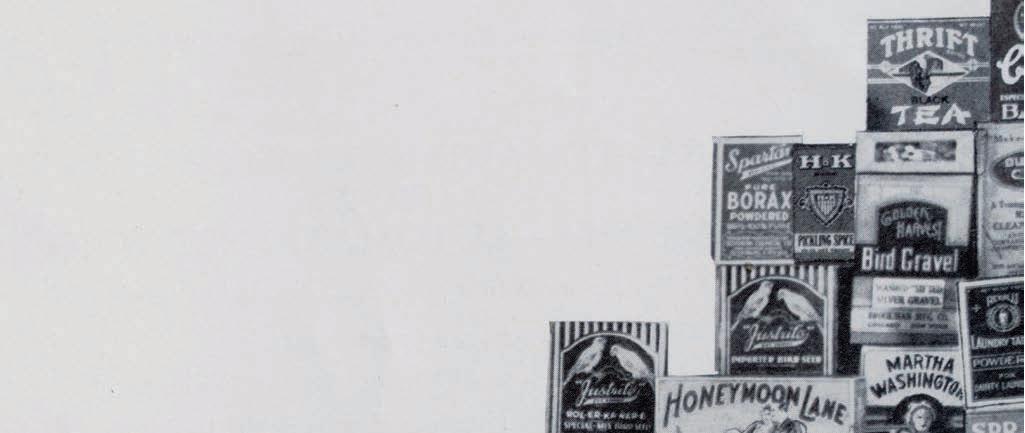

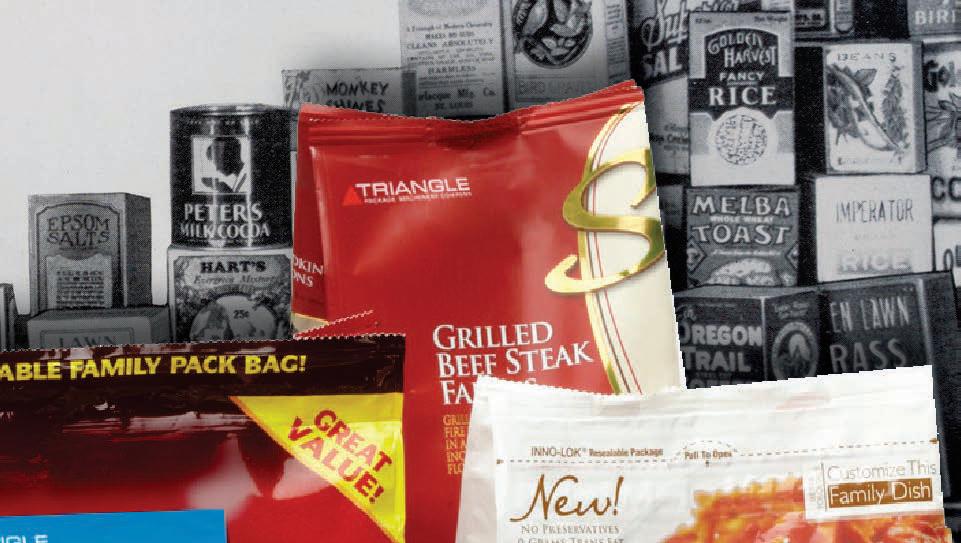

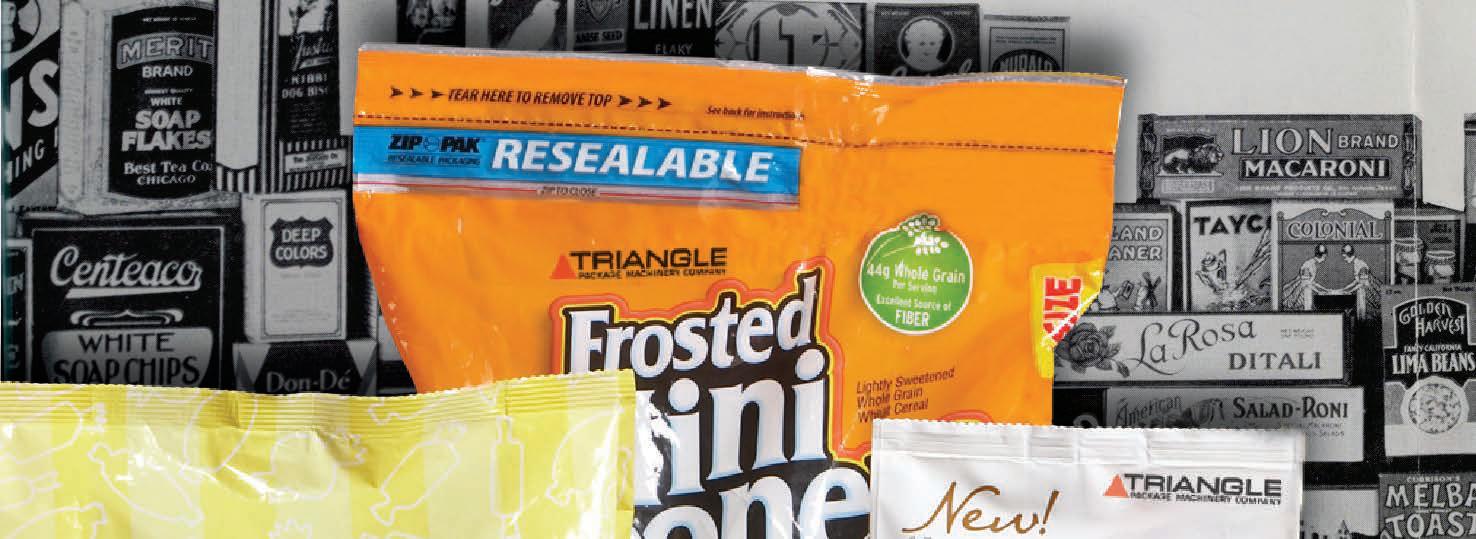








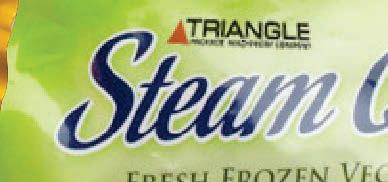




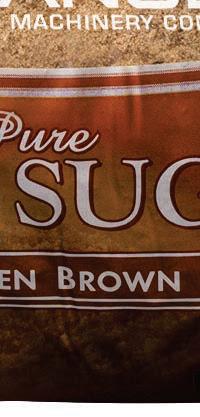


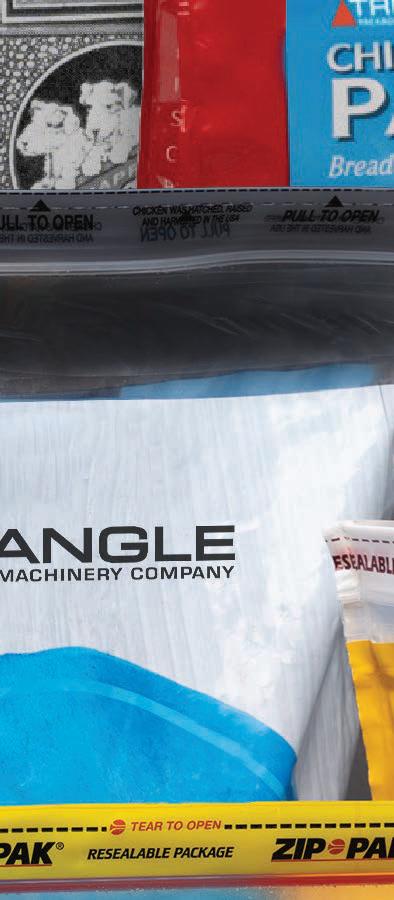























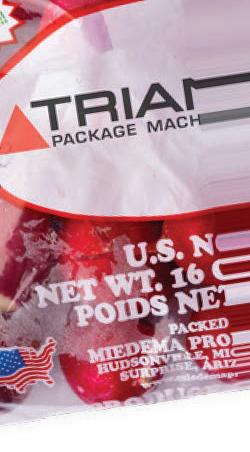





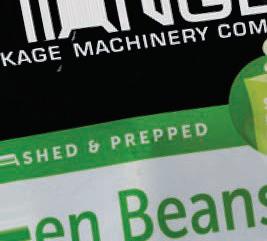

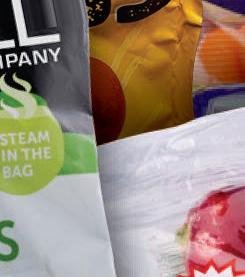


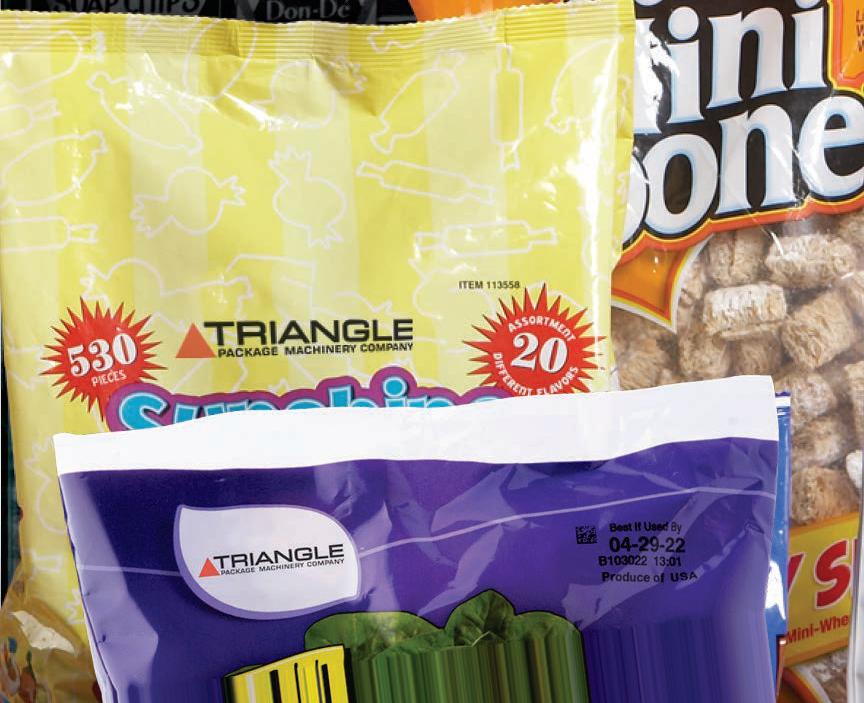





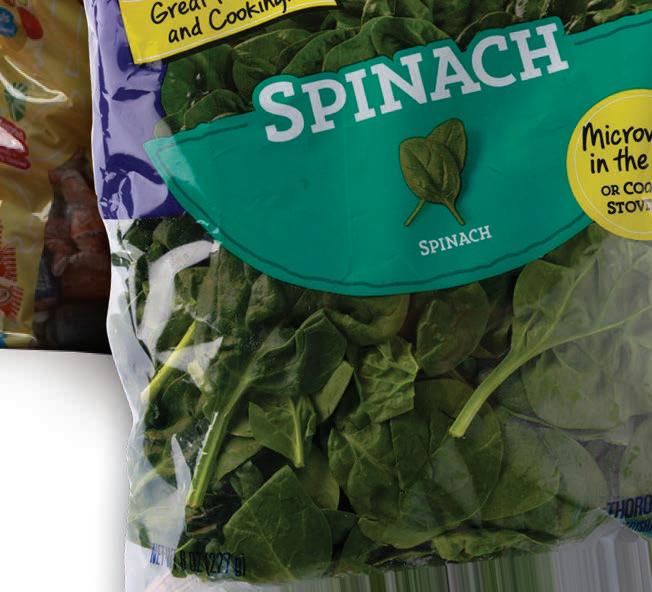
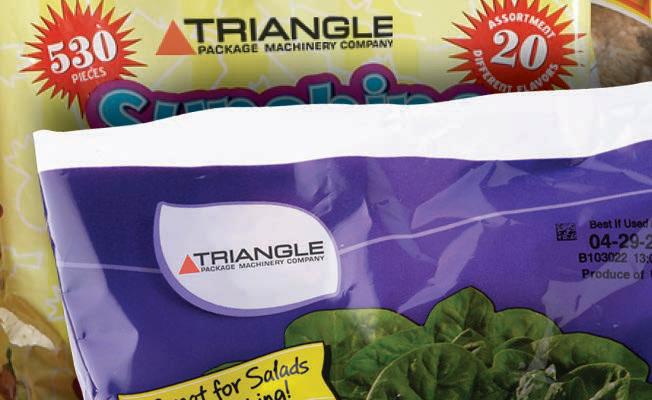






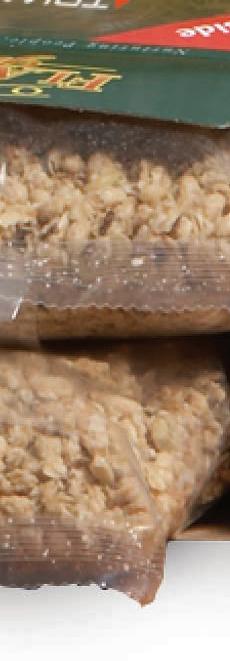







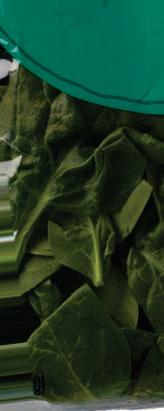






800.621.4170 | trianglepackage.com 100 YEARS OF KEEPING FOOD SAFE
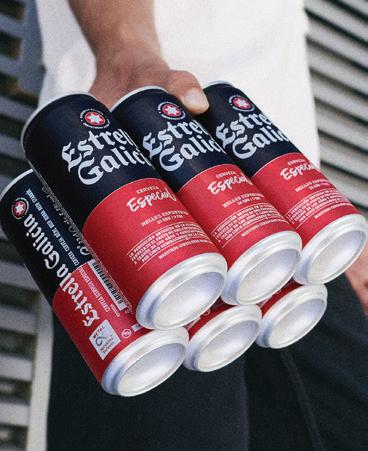



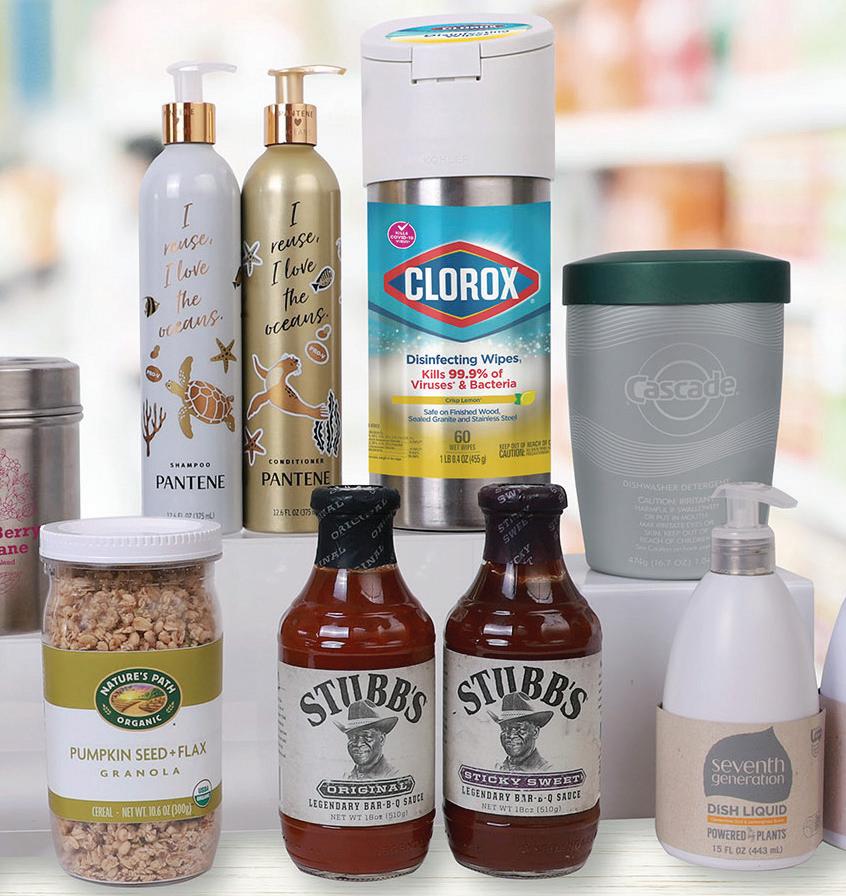

4 PW FEB2023 Packaging World® (ISSN # 1073-7367) is a registered trademark of PMMI, The Association for Packaging and Processing Technologies. Packaging World® is published monthly by PMMI with its publishing office, PMMI Media Group, located at 401 N. Michigan Avenue, Suite 1700, Chicago, IL 60611; 312.222.1010; Fax: 312.222.1310. Periodicals postage paid at Chicago, IL, and additional mailing offices. Copyright 2023 by PMMI. All rights reserved. Materials in this publication must not be reproduced in any form without written permission of the publisher. Applications for a free subscription may be made online at www.packworld.com/subscribe. Paid subscription rates per year are $254 in the U.S., $363 Canada and Mexico by surface mail; $605 Europe and South America; $907 Far East, Australia, and other countries by air mail. Single copy price in U.S. is $20. To subscribe or manage your subscription to Packaging World, visit Packworld.com/subscribe. Free digital edition available to qualified individuals outside the United States. POSTMASTER; Send address changes to Packaging World®, 401 N. Michigan Avenue, Suite 1700, Chicago, IL 60611. PRINTED IN USA by Quad. The opinions expressed in articles are those of the authors and not necessarily those of PMMI. Comments, questions and letters to the editor are welcome and can be sent to: editors@packworld.com. Mailing List: We make a portion of our mailing list available to reputable firms. If you would prefer that we don’t include your name, please write us at the Chicago, IL address. DEPARTMENTS Connect with us: VIDEO How to Open an AdhesiveOnly Six Pack pwgo.to/7904 VIDEO Concentrated, Refillable Pack System pwgo.to/7905 PODCAST PepsiCo Empowers Next-Gen Workforce pwgo.to/7906 VIDEO Winter Fancy Foods Show Highlights pwgo.to/7907 packworld.com COLUMNS 7 Lead Off 18 The Big Picture 20 Sustainable Packaging 44 Shelf Impact! 48 The Insider NEWS/EVENTS 8 News 16 Quotables/By the Numbers 46 Industry Watch PRODUCTS 47 Technology ADVERTISING 47 Advertiser Index Connect with a Leaders in Packaging supplier and support packaging education! www.packworld.com/leaders 20 44
Aladin Alkhawam Director, Packaging Operations, Par Pharmaceutical Jan Brücklmeier Technical Application Group Packaging Technology Expert, Nestlé M. Shawn French Director – Innovation & Packaging Engineering (Beverage), Danone North America Patrick Keenan R&D Packaging Engineer, General Mills/Annie’s Organic Snacks Mike Marcinkowski Global R&D Officer, GPA Global & Hub Folding Box Co. Paul Schaum Chief Operations Officer, Pretzels Inc. David Smith, PhD Principal, David S. Smith & Associates Brian Stepowany Packaging R&D, Senior Manager, B&G Foods, Inc. Jasmine Sutherland President, Texas Food Solutions; Vice President, Perfect Fit Meals
EDITORIAL ADVISORY BOARD
MORE THAN JUST LABELING & CODING EQUIPMENT
A leader in Labeling and Product Coding systems, ID Technology also produces labels for primary and secondary packaging. We’ve made major investments in prepress, flexo and digital print technology for printing prime product labels, RFID smart labels, and automated systems for making direct thermal and thermal transfer labels. With access to an extensive portfolio of materials and adhesives, there is an ID Technology label solution for even the most demanding applications.
• Multiple label converting facilities across North America to reduce shipping time and expenses.
• Innovative materials that give you more labels per roll while reducing waste.

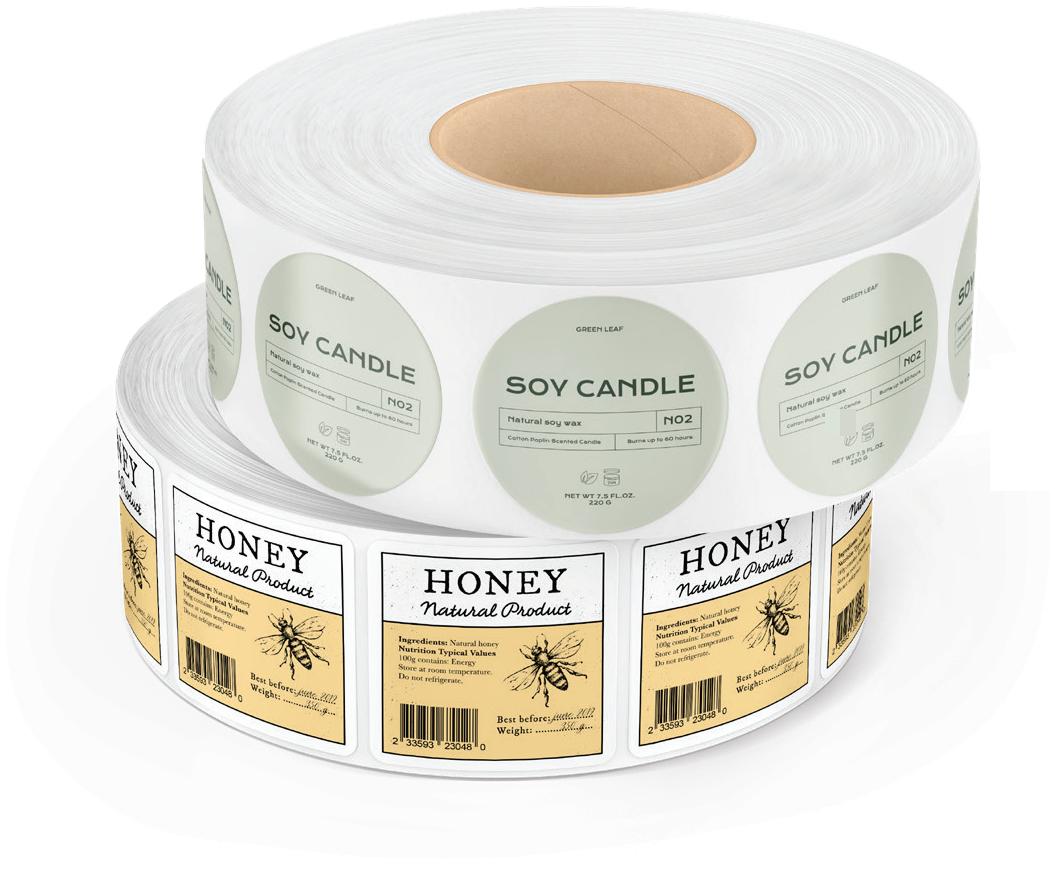

• Capacity for high volume production of blank, preprinted, and specialty labels.

• Time saving added features, such as clear leaders and trailers and length-matched kits of thermal transfer labels and ribbons.
• Flexo, digital and hybrid printing technologies.

• Professional graphic artists that provide label design and construction expertise.
To find your local ID Technology sales and service contact, scan QR code or visit: idtechnology.com/online-sales-and-service-directory
UPGRADE YOUR PRIMARY & SECONDARY LABELS CONTACT US AT IDT@PROMACHBUILT.COM OR VISIT LABELS.IDTECHNOLOGY.COM IDTechnology@ProMachBuilt.com | Fort Worth, TX | 817-626-7779 | IDTechnology.com
© 2023 ProMach Inc.
CONTENT

























Matt Reynolds Chief Editor
Anne Marie Mohan Senior Editor @PackagingTrends
Iris Zavala Managing Editor
Sean Riley Senior News Director
Pat Reynolds, Sterling Anthony,
Eric F. Greenberg, Ben Miyares Contributing Editors

David Bacho Creative Director
ADVERTISING
Wendy Sawtell Vice President, Sales wsawtell@pmmimediagroup.com
Lara Krieger Production Manager lkrieger@pmmimediagroup.com
Janet Fabiano Financial Services Manager jfabiano@pmmimediagroup.com

PMMI MEDIA GROUP




















David Newcorn President
Elizabeth Kachoris Vice President, Digital
Kelly Greeby Senior Director, Client Success & Media Operations
Jen Krepelka Director, Digital Media
Mike Prokopeak Senior Director, Content & Brand Growth
Trey Smith Senior Director, Events
Sharon Taylor Director, Marketing
Joseph Angel Founding Partner and Executive Vice President, Industry Outreach, PMMI
Lloyd Ferguson Founding Partner
Questions about your subscription or wish to renew? Contact circulation@pmmimediagroup.com.
Packaging World • PMMI Media Group 401 N. Michigan Ave., Suite 1700, Chicago, IL 60611 Phone: 312/222-1010 • Fax: 312/222-1310

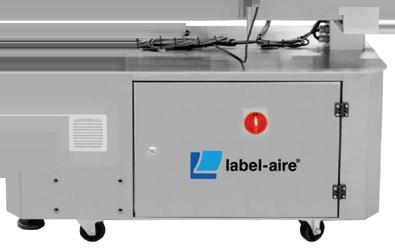
E-Mail: info@packworld.com • Web: www.packworld.com



PMMI The Association for Packaging and Processing Technologies 12930 Worldgate Dr., Suite 200, Herndon VA, 20170 Phone: 571/612-3200 • Fax: 703/243-8556 • Web: www.pmmi.org



Staff at PMMI Media Group can be contacted at info@pmmimediagroup.com

Follow us on twitter @PackagingWorld 6 PW FEB2023
How Will AI Shape Packaging’s Future?
As Artificial Intelligence (AI) technologies advance, they have the potential to revolutionize the way brands and CPGs approach packaging. One of the most significant impacts of AI on packaging operations is the ability to optimize and streamline the packaging process. AI algorithms can analyze vast amounts of data to determine the most efficient and cost-effective packaging solutions. This can result in faster and more accurate packaging, reducing waste, and increasing efficiency. Moreover, AI can help companies to quickly identify and resolve any issues that arise during the packaging process, such as missing or incorrect labels, reducing the risk of product recalls, and ensuring that consumers receive the right product.
In addition to optimizing the packaging process, AI can also help brands and CPGs to make more informed decisions about their packaging materials. AI algorithms can analyze environmental impact data, such as greenhouse gas emissions, water usage, and waste generated by different packaging materials, allowing companies to make informed choices about which materials are most sustainable and eco-friendly.
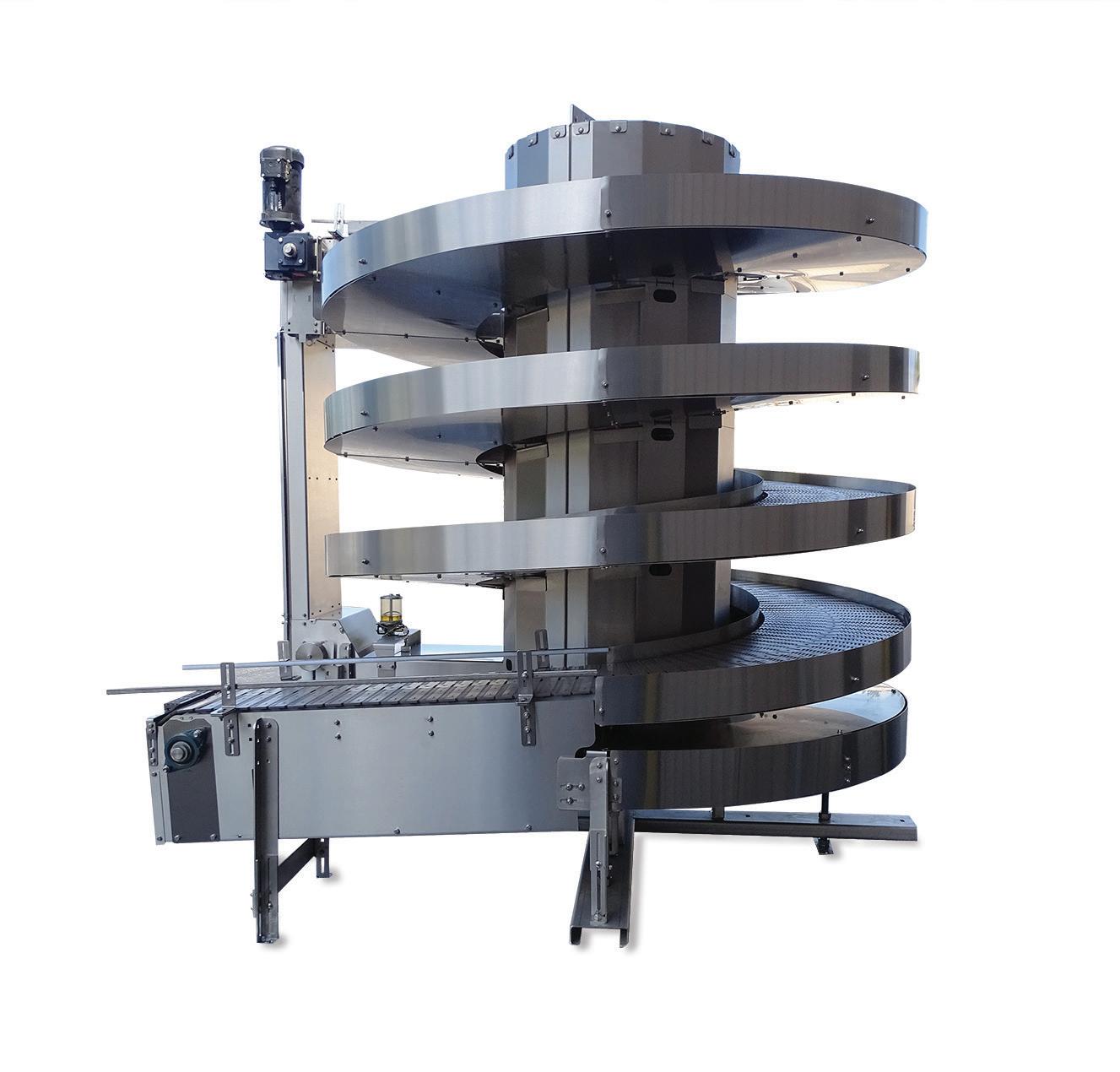
Moreover, AI can also be used to improve the design and labeling of packaging. For instance, AI algorithms can analyze consumer preferences and purchasing habits to determine the most effective and appealing packaging designs. AI can also be used to generate product labels, ensuring that they are accurate, legible, and comply with regulatory requirements.

Another significant impact of AI on packaging operations is the ability to personalize packaging. AI algorithms can analyze consumer data to create customized packaging and labeling solutions, helping brands and CPGs to stand out in a crowded marketplace. Customized packaging can also help companies to build stronger relationships with their customers, as well as increase brand recognition and loyalty.
Finally, AI can also play a crucial role in enhancing supply chain transparency and accountability. AI algorithms can be used to monitor and track products throughout the supply chain, ensuring that they are handled and stored correctly and that they reach their final destination on time and in good condition. This can help companies to reduce waste and improve the efficiency of their supply chains, as well as ensuring that consumers receive safe, high-quality products.
In conclusion, AI has the potential to transform the packaging operations of brands and CPGs, making the process more efficient, sustainable, and personalized. As AI technologies continue to evolve, it is likely that their impact on packaging operations will become even more pronounced, helping companies to remain competitive in a rapidly changing marketplace. Brands and CPGs that embrace AI and incorporate it into their packaging operations will be well-positioned to succeed in the future.
Editor’s note, coming clean. The above portion of this month’s column was brought to you by AI. Using ChatGPT, tech firm OpenAI’s latest AI application, I generated this text for free in a matter of about 90 seconds. The only input was the following prompt: Write an opinion column, in 500 words or less, that explains how Artificial Intelligence might impact brands’ and CPGs’ packaging operations.

How did the AI do? It’s a little formulaic and overly reliant on the word “moreover,” with all the charm of a high school essay. But it’s well-reasoned—I don’t have a bone to pick with any of the conclusions. It exhibits some lateral thinking, not confining itself to one subtopic.
But more importantly, it could easily pass for the work of a living, breathing human with access to Google and Wikipedia. Does that mean ChatGPT passes the Turing Test, an assessment first proposed by the godfather of computer science Alan Turing, to test a machine’s ability to exhibit intelligent behavior equivalent to, or indistinguishable from, that of a human?
In other words, had we just published it without telling you this column was AI-written, would you have known? Could you have spotted the machine in your midst?
The onset of the AI age is upon us, and it will precipitate a lot philosophical and ethical questions. This is just the tip of the iceberg, and questions like these will be keeping your columnist up late thinking. With the rise of AI, it’s time for packaging professionals to grapple with it, too. PW

mreynolds@pmmimediagroup.com



7 www.nerconconveyors.com 844-293-2814 SpirexTM Contact Us for Details New 18” Design CONVEYOR EQUIPMENT IN 6 - 8 WEEKS • Occupies minimal floor space • No changeover needed • Modular design for easy modifications • Configured for various in-feed and discharge height combinations
Options of multiple slope angles and chain widths
•
LEAD OFF
Image generated by the Lensa AI app after analyzing a dozen photos containing Matt Reynolds, Chief Editor
Japanese Brand’s Shower Cream Refill
Now in a 100% Recyclable Pouch
Japanese beauty care brand Shokubutsu Monogatari is hitting all of the three R’s—Reduce. Reuse. Recycle.—with a new 100% recyclable pouch construction for its shower cream refills in Thailand. Shokubutsu Monogatari is a brand of Lion Corp., a Japanese multinational manufacturer of detergent, soap, medications, oral hygiene products, and other toiletries, whose corporate commitment includes, “Supporting cleanliness, health, and comfort, while protecting our global environment.”

“Lion has always been committed to developing sustainable projects and packaging,” says Lion (Thailand) SPC Business Executive Manager Somsak Srisaardrak. “This is in line with the shifting needs of consumers, as they become increasingly interested in environmentally friendly products.”
In 2019/2020, Lion approached Dow Thailand Group “to not only address consumer needs but also reduce greenhouse gas emissions and advance a circular economy in Thailand” by developing a recyclable pouch for its shower cream refills, says Kodak Xiao, Asia Pacific marketing director for Packaging Health & Hygiene, global market segment director for Food & Specialty Packaging and Specialty Plastics at Dow.
Shokubutsu Monogatari had already entered the refillable/reusable packaging space with flexible refill pouches—a popular format in Thailand—but the packaging could not be recycled. According to Xiao, requirements for such a pouch include durability and high toughness to protect and ensure the quality of the product across its useful life as well as optics for shelf appeal. “Traditionally, such refill bags are made from multi-material packaging that typically involves different types of materials, such as PET, nylon, and polyethylene,” he explains. “PET and nylon are used for printing purposes, while nylon can further strengthen the toughness of the packaging, and PE provides the function of heat seal.”
Dow was able to create for the brand a recyclable refill pouch with the
required properties by using its Innate TF Polyethylene Resins for Tenter Frame Biaxial Orientation (TF-BOPE) to replace the PET and nylon, resulting in an all-PE structure. According to Xiao, Dow is first to launch the TF-BOPE solution globally, a material typically challenging to produce.
“Tenter frame biaxial orientation is a mature film fabrication technology widely used in producing BOPP [biaxially oriented polypropylene], BOPET, and BOPA [biaxially oriented polyamide] films,” says Xiao. “Traditionally, utilizing this technology to make BOPE is very difficult, as it is challenging to acquire a decent operation window on the industrial production lines due to the inherent property limitations of PE.”
To develop Innate TF PE resins, Dow employed its proprietary catalyst
Estrella Galicia Replaces Paperboard with Adhesive-Only Multipacks

Spanish beer brewing heavyweight Estrella Galicia, a Corporación Hijos de Rivera brand, is rolling out a new adhesive-only multipack format it calls the “No Pack.” By using a line of glue dots where one can abuts another in a six-pack format, the company says can minimize packaging and improve its sustainability profile by completely doing away with paperboard can handles. The format is already rolling out on six-packs of 25-cL and 33-cL sizes of Estrella Galicia Especial and Estrella Galicia 00 beer varieties. It will eventually extend to 1906 Reserva Especial and Red Vintage varieties.
“Our ambition is to always do things better, looking
for new ways to generate a greater positive impact. We are constantly working to ensure that our products are increasingly respectful of the environment, innovating in different aspects that help us minimize waste and the carbon footprint linked to our activity. The No Pack is the perfect example that sums up our purpose of not conforming. We believe that the best packaging for the planet is the one that does not exist,” says Ignacio Rivera, chairman of Corporación Hijos de Rivera.
Under this format, paperboard multipacks are replaced with only a few glue dots that serve as a link between the six cans. The brand points out that it had never used plastic rings to begin with, only 100% recyclable paperboard multipacks. But
8 PW FEB2023 NEWS
and polymerization technologies as well as its experience in the orienta tion film market. Notes Xiao, due to its unique molecular architecture, BOPE films can be smoothly fabricated on existing BOPP lines with high quality consistency and gauge evenness.

“Meanwhile,” he adds, “the high orientation applied in MD [Machine Direction] and TD [Transverse Direction] during the tenter frame process endows films with excellent mechanical properties, high stiffness, and outstanding optical appearance, which represents a giant leap from the performance of traditional PE films and enables the substitution of tradi tional non-recyclable materials with all-PE designs for various packaging applications.
“The film also offers distinctive physical properties that can enable material substitution, film layer elimination, and downgauging to reduce overall packaging materials.”

Joining Lion Corp. and Dow Thailand Group in the development of the Shokubutsu Monogatari refill pouch were Dow’s Pack Studios Singa pore and the distribution network of Asian petrochemical company SCG Chemicals (SCGC). “The recyclable refill bag for Shokubutsu Monogatari shower creams is an example of how more sustainable packaging can help to close the loop, through collaboration from business alliances, Dow’s recyclable packaging solution, and support from SCGC,” says Lion Corp.’s Srisaardrak. “These made the development of Lion Thailand’s first recyclable refill bags possible while ensuring the quality of the product inside the packaging. This packaging also helps to reduce greenhouse gas emissions and advance a circular economy in the country.”
The Shokubutsu Monogatari shower cream refill pouch was intro duced in September 2022 in two sizes, 200 and 500 mL, across Thailand in department stores and supermarkets and, says the company, “will eventually replace the older bags.”
—Anne Marie Mohan
under the new format, the Galician brewery says it will further reduce the carbon footprint of each of its six-pack by 40%.
According to a release, “Along with this No Pack for the six-can packs, the company has announced other changes to minimize waste also in larger formats: the film that covers the packs of 12 and 24 cans will be replaced by 100% recyclable paper. With this, the company will eliminate all secondary plastic from all its canned formats.”
The No Pack format is implemented on equipment by KHS, which Estrella Galicia describes as “a company specialized in the manufacture of this type of packaging in packs of both cans and rPET bottles.” Recently, Danish multinational brewer Carlsberg has rolled out similar adhesive-only multipacks (read more at pwgo.to/7898), also using KHS technology.
This launch is part of the positive impact strategy of Hijos de Rivera. The brand owner says this is an ambitious plan that combines the regeneration of the planet, looking after people, pride in origin, and joint work with allies. —Matt
Reynolds
Coca-Cola Europe Adopts HDPE Tethered Closure, Follows EU Directive


































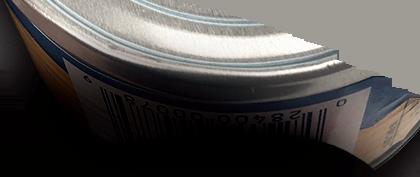


In Europe, the Coca-Cola Company announced that it is adopting a lightweight, HDPE tethered closure for its carbonated soft drinks in PET bottles. Bolstered by the European Union (EU) Single-Use Plastics Directive, this new tethered closure for Coca-Cola is designed to remain intact with the bottle, making it less likely to be littered and more likely to be recycled. Berry Global Group, Inc. is the rst plastic packaging manufacturer to supply Coca-Cola this tethered closure format. Berry’s Proxima tethered closure recently won a prestigious Technology Excellence Award from PMMI in the sustainability category at PACK EXPO International.













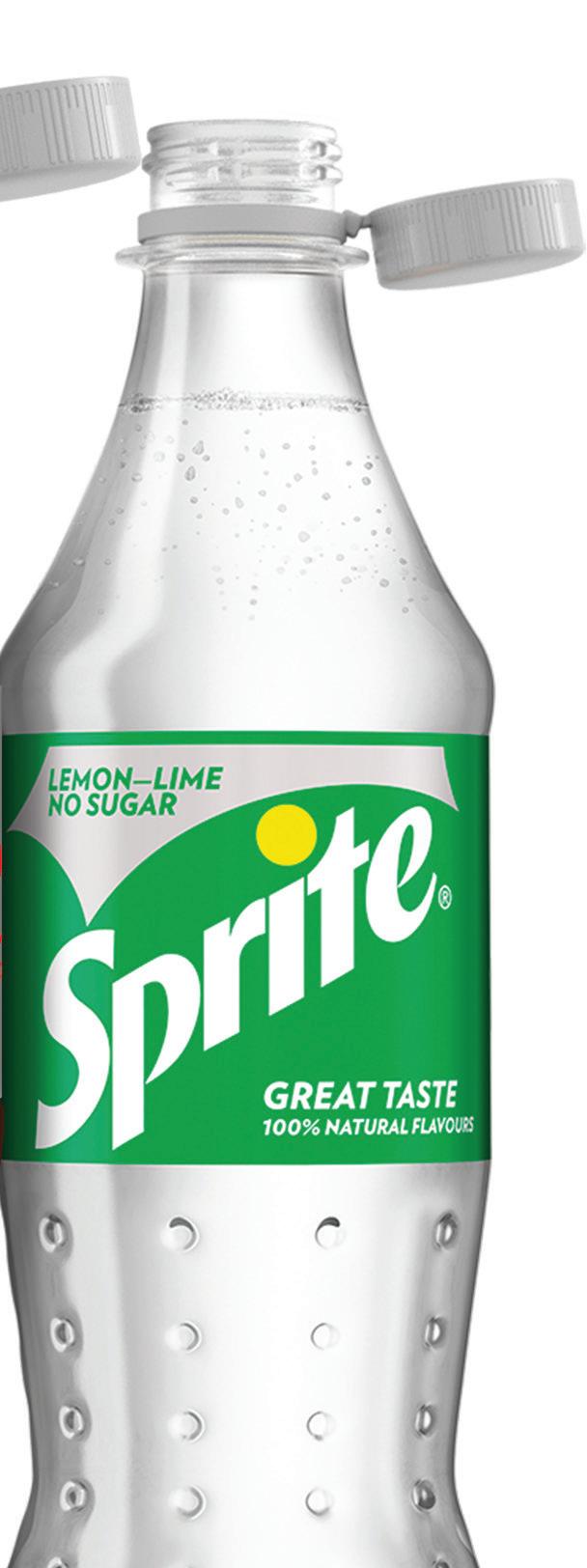
Over 400 million closures have been successfully applied to date on Coca-Cola bottling lines in Germany, Spain, and the UK, with the rollout to continue to the company’s other European plants. The EU Directive 2019/204 requires plastic beverage bottles up to 3 L in size to have closures that remain attached to the container throughout their intended use from July 2024. And this collaboration helps progress Coca-Cola’s goal to make 100% of its packaging recyclable globally by 2025.





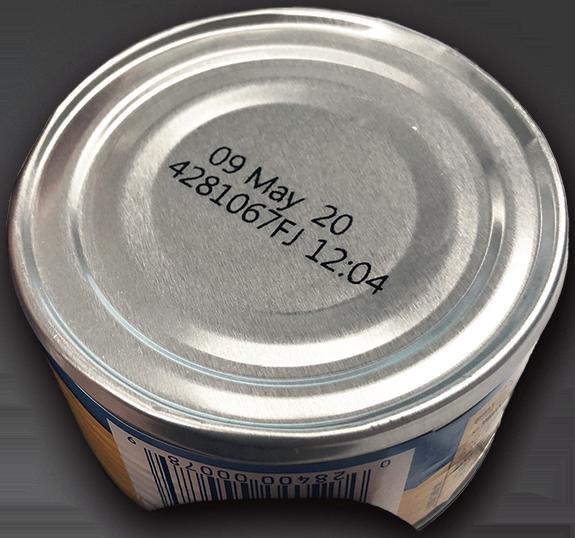



Maintaining a convenient and comfortable user experience, in addition to product safety and security, Berry’s new tethered closure for CocaCola features a special tamper-evident band that, once broken, does not impact the closure’s ability to remain attached and is positioned out of the way for drinking but can easily be reclosed. When open, it provides a wide angle for easy access to the beverage and comfortable on-the-go drinking.


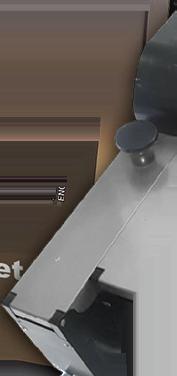
Berry’s closure for Coca-Cola is based on its patented CompactFlip hinge solution. It is the rst to be used in conjunction with the new lightweight 26-mm GME30.40 neck, developed by the Cetie (The International Technical Centre for Bottling) Single-Use Plastics Group, of which Berry is a member. The new neck nish delivers an over 1-g saving in PET compared to the current PCO-1881 neck. Combined with a 10% weight reduction from the Berry closure, the new pack is now around 20% lighter than the PCO-1881 version.

“Innovation in packaging design is key to helping our customers meet their ambitious sustainability goals while delivering attractive, functional solutions that meet and exceed constantly evolving market demands,”


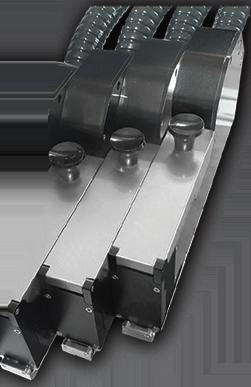




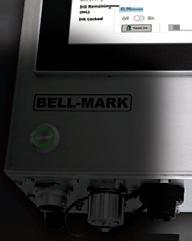











says Thierry Bernet, VP circular economy & innovation at Berry Global. “Because PET bottles are the most recycled plastic package type, this collaboration has tremendous potential to help keep resources in use and out of our environment.” —Matt Reynolds






10 PW FEB2023 NEWS
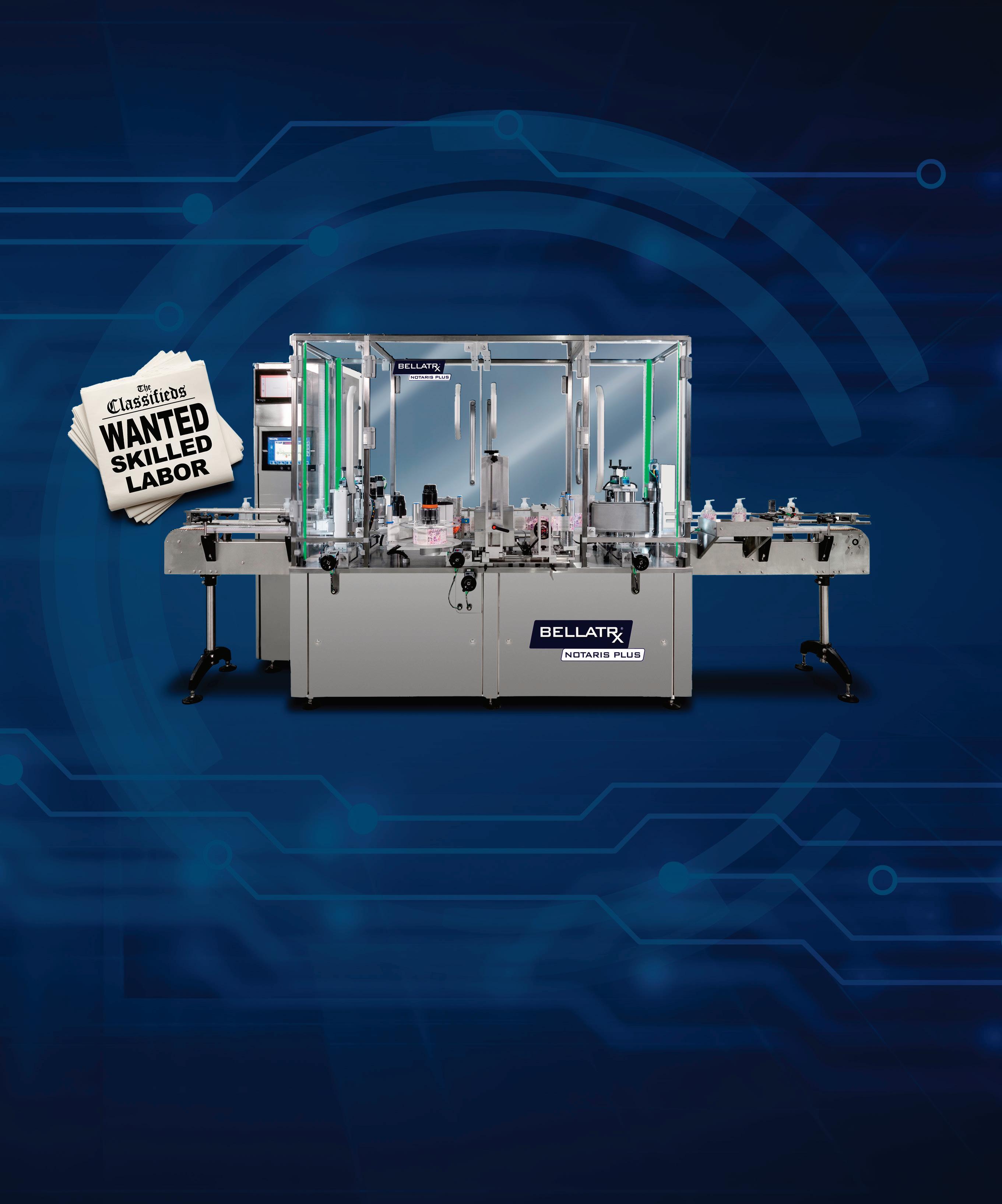
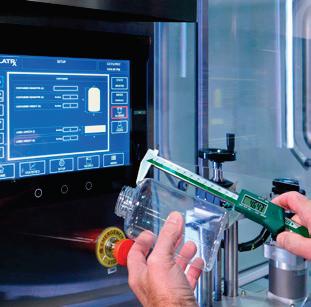


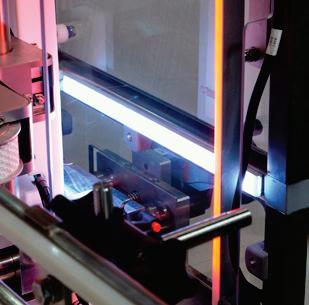
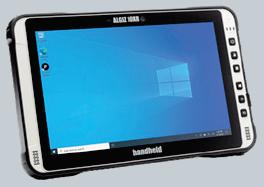

CONTACT US TODAY BellatRx.com | 514.630.0939 info@bellatrx.com Operator enters bottle and label dimensions and the recipe is automatically created Step-by-step video guides operator through the setup Arrows indicating the direction of the adjustments and green LED indicates when set point is reached Setup area is litup to drive operator attention Allows access to machine parameters from anywhere Servo Drives Setup Video Instructions Digital Set Point Setup Spot Light Mobile Screen View NOTARIS PLUS The Evolution in Labeling Automation Redefining the relationship between operator and machine to bridge the Skills Gap in Manufacturing
SIMPLY EFFICIENT SIMPLY RUGGED SimplyFillSM
Hennepin Technical College Students Awarded Packaging Scholarship
Five students at the Automation Robotics Engineering Technology program at Hennepin Technical College in Minnesota will split the $5,000 Future Leaders in Packaging Scholarship from Packaging World and PMMI.

The Future Leaders in Packaging Scholarship from Packaging World and the PMMI Foundation was established in 2011 in conjunction with Leaders in Packaging—a print and online marketing program that enables suppliers to promote their innovations and expertise to the packaging community.


PACKAGING WORLD’S Future leaders IN PACKAGING SCHOLARSHIP
The scholarship is awarded each year to an educational institution that prepares students for careers in packaging. The recipient school selects one or more students pursuing related degrees and distributes the funds to the student(s) to defray tuition and other education-related expenses.
Automatic Bottle Filling Machine
Specialty Equipment now has a full line of bottle filling and capping machines for the lubricants, oils, cleaning industries and personal healthcare/beauty. Available in up to 14 filling heads, fills up to 6,000 2oz to 2.5 gallon bottles an hour, both flowmeter and piston-based fillers. For more information, contact us at specialtyequipment.com



Benefits
» Runs 24/7 Without an Operator
» Accurate, Fast, Flexible and Silent
» Quick Product Changeover
» Clean In-place Functionality
» Increase Production & Maximize Uptime
» Add Savings to Your Bottom Line
Types of Bottles We Fill

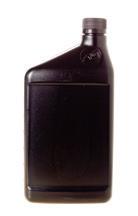

We also provide installation, parts and field service. Learn more by calling 833-467-3432 www.specialtyequipment.com
“The Automation Robotics Engineering Technology program at Hennepin Technical College is one of the oldest Packaging Technician programs in the United States. The first set of students graduated in 1975 with under the original program name of Packaging Technician,” says Jeff Thorstad, faculty, Hennepin Technical College, Automation Robotics Engineering Technologies/Packaging. “Over time, as technology advanced and it was realized that the skill set provided to students focused on Packaging Systems could be applied to many different manufacturing industries, the program name evolved into the current name while keeping our unique focus on the Packaging Industry. We provide opportunities for both full-time and part-time students with schedules that are friendly to working both full-time and part-time jobs. Currently 60% of our students are part-time students.”
Hennepin Technical College has worked directly with many regional companies to help expand their workforces through developing apprenticeships, maintenance trainee, and earn-while-you-learn models of developing new maintenance personnel who are trained in mechatronics and can solve many different types of problems that arise in the manufacturing facility. This is helping companies to find and retain new maintenance technicians in a difficult job market.
“Our graduates have become true multi-skill technicians when they enter the workforce. We focus on the whole machine and not just specialty areas such as mechanical, electrical, or pneumatics,”
Thorstad says. “Our students have knowledge about all of these areas plus PLC programming, robotics, and troubleshooting. Through this our students are able to fix the majority of the problems that occur on the manufacturing floor.”
The Automation Robotics Engineering Technology program at Hennepin Technical College program is a stand-alone program that develops maintenance technicians. The program’s focus is packaging equipment and most of the equipment it uses has been donated to by PMMI member companies such as Delkor Systems and MGS Machinery Thorstad and the team and HTC train students on the packaging equipment as it has many different applications and shows different types of systems.
Hennepin will award five $1000 scholarships based on need and leadership. At press time, faculty are in the process of obtaining a list of all the program students who applied for the college scholarships with the standard application. Once this is in hand, the program faculty will review all the applicants and apply points for leadership in the classroom, participation in student-club activities, and participation in program tours and industry events. —Matt Reynolds
12 PW FEB2023
NEWS
CK G G


















RENT OR BUY NEW EQUIPMENT IN THESE CATEGORIES
BAG SEALING EQUIPMENT
CAPPING EQUIPMENT
CARTONING EQUIPMENT

CASING EQUIPMENT
CONVEYORS
FRONT OF LINE EQUIPMENT
END OF LINE EQUIPMENT
INSPECTION EQUIPMENT
LABELERS
SHRINK EQUIPMENT
WRAPPING EQUIPMENT
COMPLETE PACKAGING LINES

VISIT OUR WEBSITE OR GIVE US A CALL US TO GET YOUR PROJECT STARTED TODAY!

build your best conveyor business



DISTRIBUTORS
Nestlé’s KitKat Wades Into Recyclable Paper Packs in Australia
Australia has of late been the epicenter of a spate of recent confectionery brand switches from traditional plastic flow wrapped packs, to recyclable, paper-based ones.
Shortly on the heels of Mars Wrigley’s launch of paper-based flow packs for Snickers, Milky Way, and Mars candy bars in Australia (read more at pwgo.to/7897), Nestlé Oceania today announced its first ever trial of what it says is innovative new paper packaging on four-finger, 45-g KitKat bars. The food grade recycled flexible wrapper for Nestle’s KitKat was supplied by Amcor, who also supplied the Mars Wrigley project.
In an exclusive trial with Coles Supermarkets across Western Australia, South Australia, and the Northern Territory, consumers can now buy KitKat bars featuring the paper wrapper for a limited time. More than a quarter of a million units will be wrapped in the new paper packaging across select stores for the trial.

The new paper packaging trial is a bid to innovate and explore every avenue to meet Nestlé’s goal of reducing its use of virgin plastics by a third by 2025, which includes using less plastic, recycled plastic, and alternatives to plastic packaging.
“We’re proud to be the first country globally to trial KitKat in paper packaging, as an important step towards reducing our use of virgin plastic. With all packaging innovations, our priority is to ensure we deliver the same delicious KitKat with creamy chocolate and crisp wafer,” says Chris O’Donnell, Nestlé Oceania general manager of confectionery and snacks. “Our partnership with Coles has made this packaging trial a possibility, where Aussie chocolate lovers can have their say on our innovative KitKat packaging. The feedback we receive on this trial will help shape the next step of giving Aussies their favorite break.”
According to a company release, each bar will feature a QR code which consumers in Western Australia, South Australia, and Northern Territory can scan to have their say by answering a series of questions about the new paper packaging. The 45-g KitKat milk [chocolate] wrapped in paper packaging has been available to purchase only from select Coles Supermarkets in those regions since January 2023 and can be recycled through curbside recycling bins that collect and process paper. The trial wrapper has a thin metal barrier film to keep the KitKat fresh and has a recyclable Australian Recycling Label.
Adds Leanne White, general manager of grocery at the partner retailer, “Coles is thrilled to partner with Nestlé on this important trial which will provide customers the opportunity to have a say on new packaging options and help the company lead the charge in innovative solutions. As part of Coles’ Together to Zero waste ambition, we are committed to reducing plastic packaging wherever possible in Coles supermarkets so we’re really proud to work with fantastic suppliers like Nestlé to trial a new packaging solution for one of Aussies’ favorite chocolate bar.” —Matt Reynolds
14 PW FEB2023
LOW PROFILE CONVEYOR modularconveyor.com 844.293.2816 • Product Flexibility: Quickly introduce new products into inventory • Process Flexibility: Modular conveyor systems with standard designs • Cost Flexibility: Quote solutions with options for every project blueprint represent Modular Conveyor Express and get your conveyor systems and equipment in 3-4 weeks!
designed
Nercon NEWS
Conveyors
by
Multi-Head Combination Weighers

• Available in 10, 14, 16, 20 & 24 Head Models
• 10.4” Color Touch Screen
• Fully Enclosed Radial Feeder
• Wash-Down Models Available
• Easy Access to Breaker for –Lock Out Tag Out
• Achievable Speeds of up to 150 BPM
• Load Cell Technology for ln-Feed Detection
• Easy Removal of All Parts for Cleaning

• Optional Timing Hoppers & Diverting Hoppers
800.504.7120
Our MULTI-HEAD COMBINATION WEIGHERS deliver a high-quality build backed by our industry leading customer service. High Tek USA knows that the food industry needs the best performance, with the best options all in one reliable and lasting solution. .
BY THE NUMBERS 2 in 3
The number of Americans, according to a recent report from the American Bakers Assn. (ABA), who say sustainability matters to them; however, only 1 in 5 say it influences their purchases
9.4 million
The number of barrels of oil displaced annually by bio-based products, with the potential to reduce GHGs by an estimated 12.7 million metrics tons of CO2 equivalents per year, according to the U.S. Department of Agriculture
$996B
The current size of the global plastics packaging industry, which is expected to grow at a CAGR of 4.4% to $1,406 billion by 2030
5.6X
The average rate of sales growth for products marketed as sustainable versus non-sustainable versions, according to the Harvard Business Review
“Redefining value throughout the food and beverage industry will lead in 2023 as consumers seek brands that listen, understand, and respond to their core values. They want brands that provide quality, trust, and confidence via their product formulations, communications, and wider sustainability actions.”
–Lu Ann Williams, global insights director at Innova Market Insights, in an article from Prepared Foods, “Trend Predictions Provide New Insights to Consumer Thinking”
“Advanced recycling diverts plastics from landfills, reduces greenhouse gas emissions and use of natural resources to create new plastics compared to conventional manufacturing methods, and creates new jobs and revenue streams. This new legislation can showcase Michigan’s leadership in plastics recycling. Regulating advanced recycling technologies as manufacturing operations, as more and more states are doing, will encourage investments in new advanced recycling facilities and manufacturing careers in the state, while contributing to a more sustainable Michigan.”
–Joshua Baca, vice president of plastics for the American Chemistry Council (ACC), in an article from Plastics News, “Michigan adopts industry-backed chemical recycling rules”
“While it’s not feasible to make a unique product for every individual, brands have found clever ways to meet this desire for personalized products, including products designed for specific need states, tech-enabled tools, and online quizzes. Consumers are looking for elevation and premiumization across their beauty and personal care purchases, and a custom-made toothpaste could fit right into this unique need state.”
–Anna Mayo, thought leadership vice president of beauty and personal care at NielsenIQ, in an article from CosmeticsDesign.com, “‘Uniquely yours’: Colgate trials customization in mass-market oral care”
–Joseph Aquilina, senior director and associate general counsel for the Consumer Brands Association (CBA), as quoted in an article from the association, “Consumer Brands Supports FTC’s ‘Green Guides’ Review”
16 PW FEB2023 QUOTABLES
“We’re pleased the Commission [FTC] is taking action to provide much needed clarity for consumers and regulatory certainty for industry through long awaited updates to the [Green] Guides. Revising the Guides based on the changes to consumer expectations and stakeholder commitments around environmental claims that have emerged in the past decade will help ensure consumers, industry, and environment are better served.”
 By Sterling Anthony, CPP, Contributing Editor
By Sterling Anthony, CPP, Contributing Editor

The Importance of Load Diagrams
A load diagram is a depiction of how a given shipment of pallet loads is to be positioned inside a trailer. The diagram is a pre-loading instruction, not a post-loading documentation. Load diagrams might not be necessary for repetitive shipments of the same composition, given a prior determination of the load pattern. When shipments vary by composition, however, load diagrams can provide multiple benefits, starting with the loading process and continuing throughout the supply chain. There are factors to be considered prior to the production of a load diagram.
Pallet loads arrive at the outgoing shipping dock via different routes, for example, from warehouse storage, directly from end-of-the-line operations, or by cross-docking. The best practice is to have the entire order collected and staged before loading commences. A load diagram is the preferred alternative to having to rely on the discretion of the loader (a forklift driver, for example).
Since a trailer is a three-dimensional enclosure, the challenge is to optimize the use of its cube. A twin challenge is compliance with state and federal regulations that set maximum combined weights (tractor, trailer, load). Loads, therefore, at most, can either “cube-out” or “weigh-out.” For any truckload (TL), the questions are how many pallet loads can there be, and how should they be positioned?
How much a pallet load should weigh can be estimated by dividing the maximum cargo weight allowed by regulations by the number of pallet loads. If the weight limit that the trailer can carry is 42,000 lb or thereabout, for example, dividing by 26 and by 30 yields a per-pallet-load weight of 1,615 lb and 1,400 lb, respectively. The optimal utilization of a trailer, therefore, requires the optimal number of pallet loads, each at the optimal per-pallet load weight.
But reality has a habit of imposing itself against theory. An example is products that are comparatively lightweight. Pallet loads can be stacked to better utilize cube and weight limits. It’s possible that the aforementioned per-pallet load weights will result in a pallet load height that’s too great for stacking. The needed tradeoff is a shorter pallet-load height and a lighter per-pallet-load weight, in exchange for the ability to stack the pallet loads.
Load diagrams might not be necessary for repetitive shipments of the same composition, given a prior determination of the load pattern. When shipments vary by composition, however, load diagrams can provide multiple benefits, starting with the loading process and continuing throughout the supply chain.
Assume a 53-ft trailer and 48-in x 40-in pallets. If the pallets are straight-loaded (length of pallet running parallel to length of trailer), 13 pallets can be aligned in a row, along the trailer’s length. Trailer width allows two such rows, for a total of 26. If the pallets are turnloaded (length of pallet running parallel to width of trailer), 15 pallets can be aligned in a row, along the trailer’s length. Trailer width allows two such rows, for a total of 30. When the additional four pallets can be had without exceeding weight limits, fewer trailers will be needed, yielding savings in transportation costs, along with sustainability/ environmental benefits. On the other hand, straight loading is faster, providing higher shipping dock productivity and efficiency.
Pinwheeling is a third way to load a trailer. There, too, pallets are arranged two-across. However, one is straight-loaded, the other turnloaded. The pairings alternate positions along the trailer’s length, yielding a pattern that accounts for the name. It is a more complicated loading, at times used when the trailer’s width is too narrow for turnloading (not the case with a 53-ft trailer and 48-in. x 40-in. pallets).
Another reality is that a trailer needs to have its load’s weight distributed evenly, with special attention afforded to the weight placed over the trailer’s axles. While in transit, trailers exit the highway, pulling into weigh stations to be checked for compliance with regulatory weight limits. Non-compliance must be corrected on the spot, before the trailer can leave the station. A variety of consequences can result. Among the worst is when the driver has to break the seal on the trailer’s doors to correct the weight distribution, and thereafter, the consignee rejects the shipment because the seal was broken.
Yet another reality is that loads must be blocked and braced so that they remain immobile during transit. How the pallet loads are positioned determines the size and location of the voids that have to be filled or otherwise accommodated. Take the example of a straight-loaded trailer, with each row of pallets placed against the adjacent wall, leaving a void down the center. Airbags and/or boards nailed into the trailer’s floor are popular methods. For back-of-trailer restraint, load bars are popular. Loads that move and shift within a trailer are not just a hazard for cargo damage. They also pose a safety hazard by interfering with the stability of and the steering of the trailer.
A final reality worth mentioning is that the loading process should take into consideration the unloading process. The latter simply is the reverse of the former. As a generality, therefore, methods that are the most productive and efficient for loading make for productivity and efficiency in unloading. PW
18 PW FEB2023
THE BIG PICTURE
Keep pace with shifting market demands
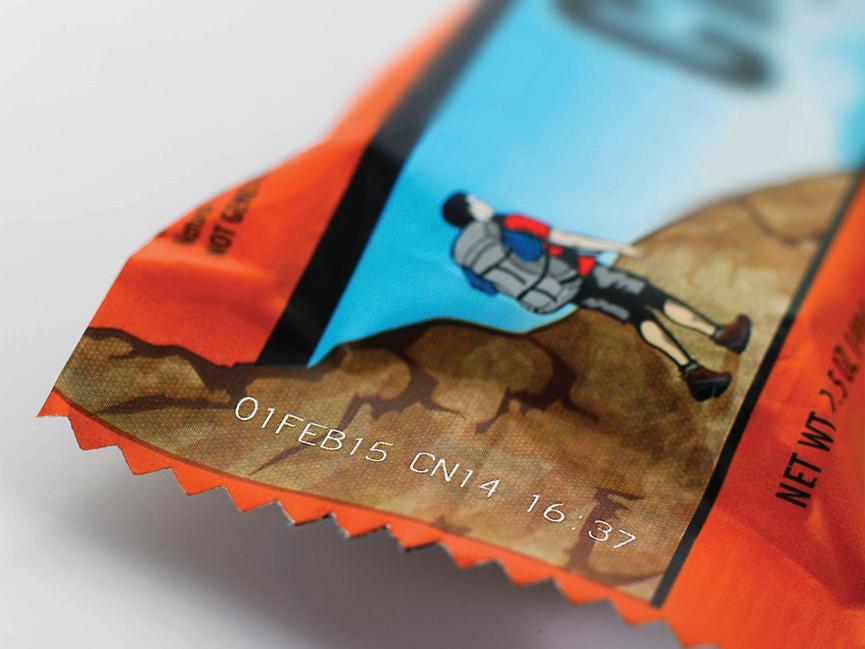



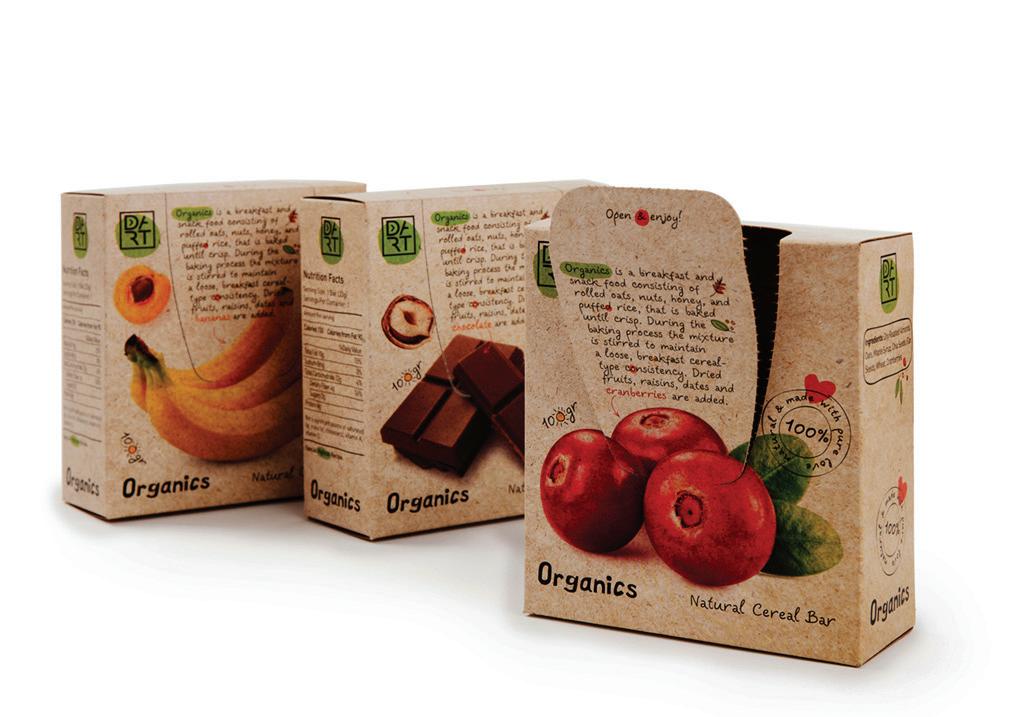

If shorter runs, higher degrees of complexity, variations within a single run, and extreme tolerances are just some of the challenges you face today, then integrating a laser system may be the solution you are looking for. Build your next generation processing equipment with reliable laser system components and purpose-built laser processing sub-systems from a trusted technology partner.
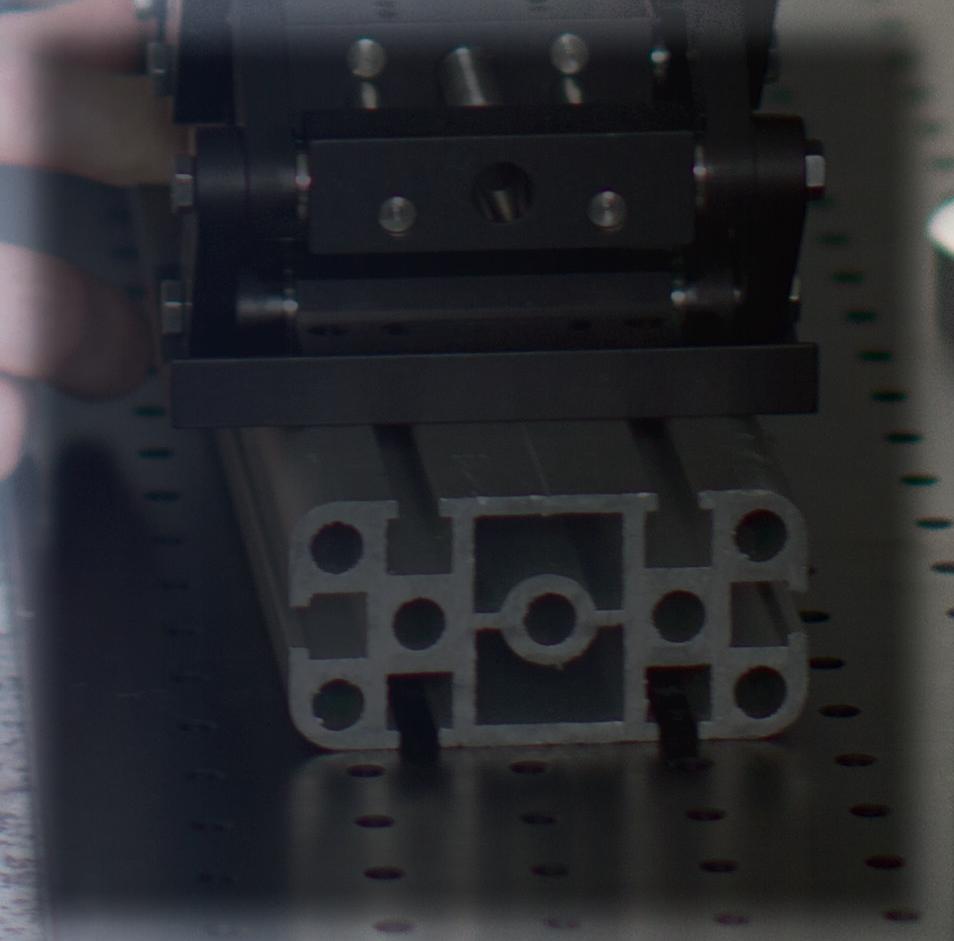
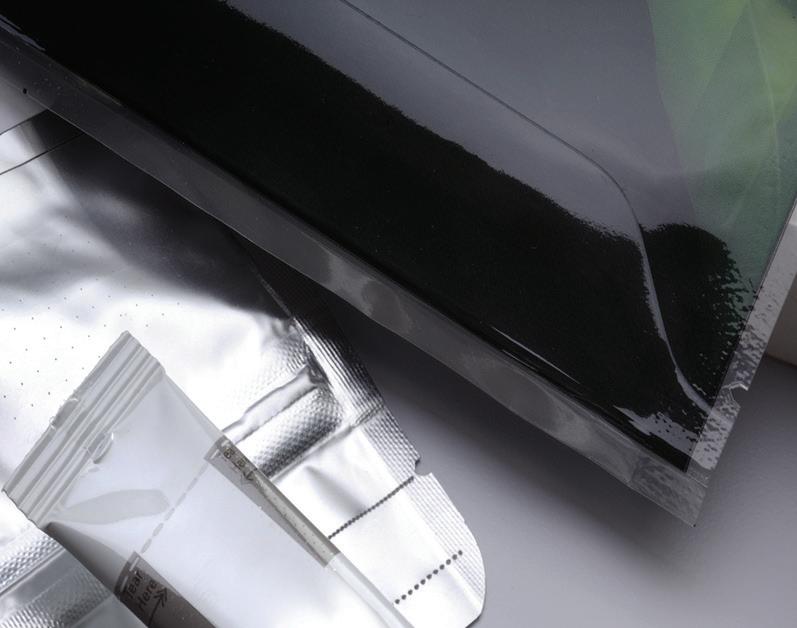
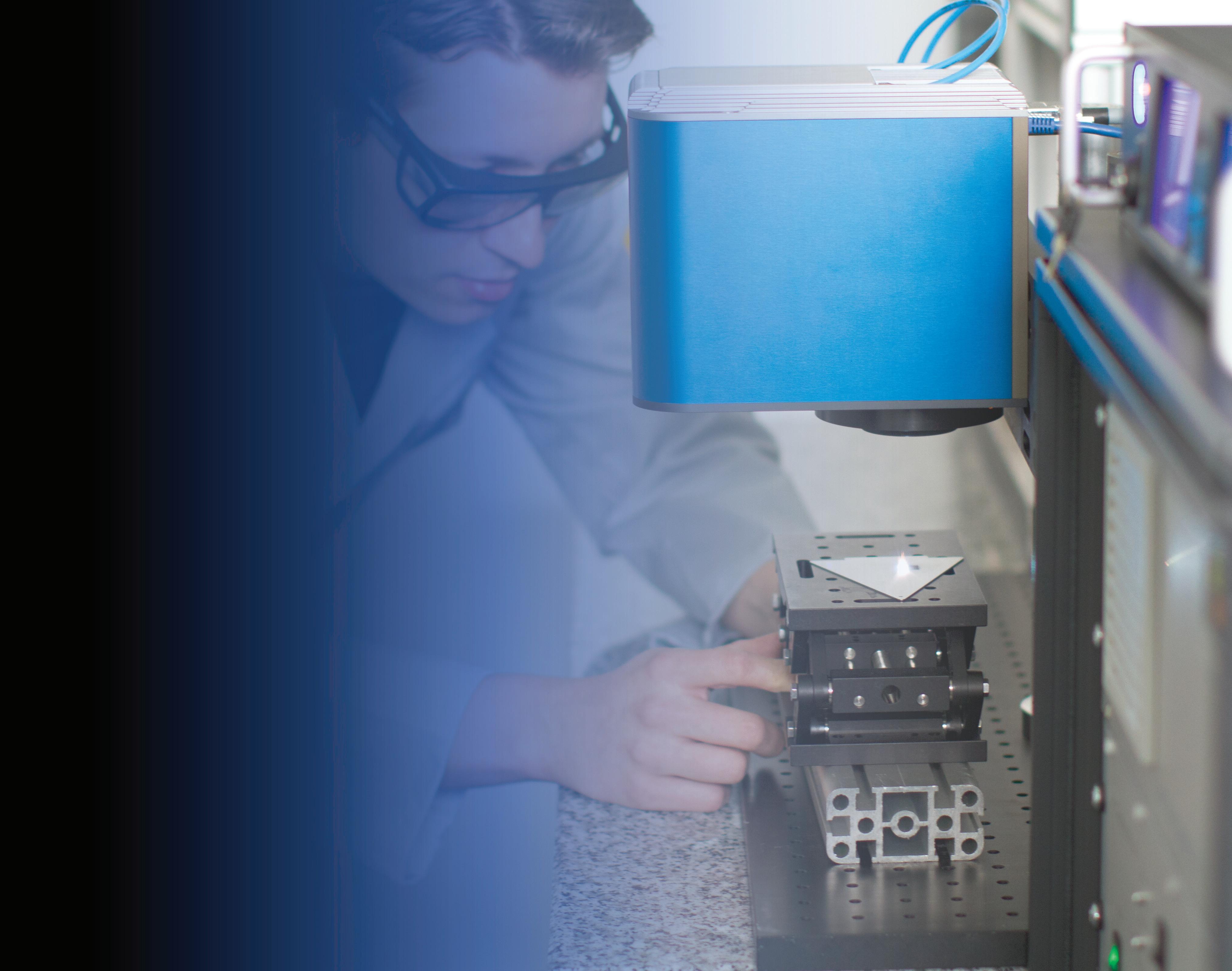
novantaphotonics.com
By Tom Szaky, Contributor
What’s Needed to Scale Reuse?
The transition to reusable packaging is now being seen as a must in the consumer packaged goods industry. The pressure is on from the international community—take the United Nations treaty on plastic pollution and calls from organizations like Greenpeace, for example. And reuse legislation is on the way. As far back as 2020, French law 2020-105 called for 10% reusable packaging on the market by 2027. Recently, the European Commission issued a proposed revision to its Packaging and Packaging Waste Directive that includes reusable packaging mandates. Among the controversial targets: reusable packaging for 95% of cold and hot beverage cups by 2040.
Even the world’s biggest packaging creators have set specific commitments in response. In February 2022, Coca-Cola set a target of 25% reusables by 2030. PepsiCo recently followed suit, with a target of 20% by the same year.
The time to begin transitioning to reusables is now, and many companies are launching reuse pilots. But can they meaningfully implement at scale?
Reuse is scalable—it’s proven
Let’s start with the main methods for approaching a reusable packaging program. You could opt for a concentrate, refill, or prefill model—each of which boasts success stories.

With concentrate-based systems, companies remove the water from their products, delivering them in capsule, tablet, or other concentrate form. Shipping is inexpensive, and “just add water” is relatively easy for consumers. Look to the cleaning product company Blueland to see this model in action (see pwgo.to/7851).
Refill can be approached through in-store or at-home models, with consumers either refilling their own packaging at kiosks in stores or receiving refill packs directly at home. For the former, picture classic bulk bins full of cereals, pet food, and laundry powder, or more modern Algramo refill vending machines (see pwgo.to/7876). For the latter, consider Above & Beyond, which sells its lip balm in an aluminum case and then sends refills to users in compostable pods (see pwgo.to/7877).
Then we have the prefill model, in which consumers can pluck prefilled items off of shelves. They pay a deposit that they receive back when they return the empty container. Prefill has been proven time and again. Great examples are the German beverage system, The Beer Store in Canada, and our propane tanks in the U.S.
From a personal perspective at Loop, we’ve found our prefill strategy to be highly scalable (see pwgo.to/7878). It’s convenient for all stakeholders and, most importantly, it can be deployed in all product types (from ketchup to shampoo to tea), which isn’t true of concentrates or bulk bins. Consumers still get to grab a package right off the shelf, rather than having to fill a container.


Health drink brand Pocari Sweat in Japan approached the launch of its reusable packaging with a comprehensive public relations, social media, and POS marketing strategy.
When it comes to operations, Loop has successfully passed all quality and safety audits from our partners and has proved that it can reuse a wide variety of products—from baby food with Gerber to motor oil with Shell—in a wide range of materials, shapes, and forms. It has been operational across channels, from e-commerce to in-store, has become fully integrated into its retail and brand partners’ supply chains, and has successfully handled deposit reimbursement to consumers by leveraging its own online application as well as through the cashier or via smart bins.

20 PW FEB2023 SUSTAINABLE PACKAGING
With Loop, consumers can purchase a range of products in prefilled, reusable/returnable packaging, either online or at select retailers across three continents.
Tom Szaky is founder and CEO of TerraCycle and founder of the Loop global shopping platform.
Loop also has proven scalability. With successful pilots across three continents, Loop has shown that reuse can successfully be applied to any packaged good at large (see pwgo.to/7879). The consumer response has been very strong and consistently reconfirmed via both qualitative and quantitative research. In-market sales showed up to 4% conversion, and return rates were up to 80%. A McKinsey & Company study, commissioned by one of our partners, also proved that the model was as profitable as single-use for both brand and retailers.
All this is to say that prefill reuse works. The key now is focusing on scale.
What’s needed to scale?
As consumers are ready to adopt refillable options, the true roadblock to scalability is that reuse is often not made a commercial priority. Through our learnings from launching and growing Loop, we’ve identified four aspects needed to scale a reuse program.
1. Make it a commercial priority: To be successful, reuse has to be a priority across the entire corporate ecosystem, from commercial to supply chain to packaging suppliers to retailers. Too often, reuse is seen as simply a sustainability pilot (with no commercial ownership) versus a commercial priority. The key KPIs should not be learnings and publicity but objective volume shift from disposable to reusable.
2. Support it in market: It’s been shown that if a reusable version of a product is supported, it can outsell its disposable counterpart. For example, health drink brand Pocari Sweat in Japan approached the launch of its reusable packaging just like the launch of a brand-new product, with a comprehensive public relations, social media, and point-of-sale marketing strategy. Products were sold out every single day across 66 stores for the first weeks and continue to outsell the brand’s disposable products.
3. Create the right value equation: Approach reusable package design from a product innovation standpoint. What value can reuse help unlock? Durable packages have the opportunity to deliver extra benefits to the consumer. For instance, we found that reusable Häagen-Dazs containers had a number of new functional benefits as well as better aesthetics.
4. Pick scalable materials: We learned that stainless steel or aluminum, while durable materials, can be less scalable because they are more expensive than durable plastics and are not compatible with existing fill lines. A more scalable alternative for some companies could be to transition packaging that is single-use today into something durable enough to be reusable—for instance, by swapping PET to polypropylene or simply increasing wall thickness, which would mean existing production molds could still be used.
The reuse revolution is here
The world wants reusables, and legislation is coming. Organizations that start planning for reuse now will be ready for the inevitable mandates and gain a competitive advantage.
While shifting to reusables is an important and necessary step, it’s not the answer. As we always say, the only real solution to the waste crisis is for us all to buy less PW 92
PROCESSING AND PACKAGING SOLUTIONS



• Food processing systems

Helping you bring
Delivering Results. With Heat and Control, you have a partner with the scale to support your success, the innovation to advance your operations, and a commitment to quality that will help you offer better products for consumers.
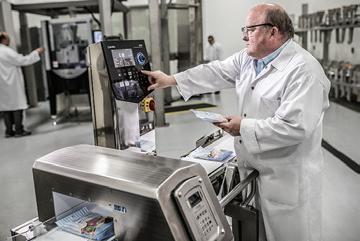


• Conveying and product handling
• Multihead/combination scale weighing and filling
• Snack bagmaking and case packing
• Metal detection and x-ray
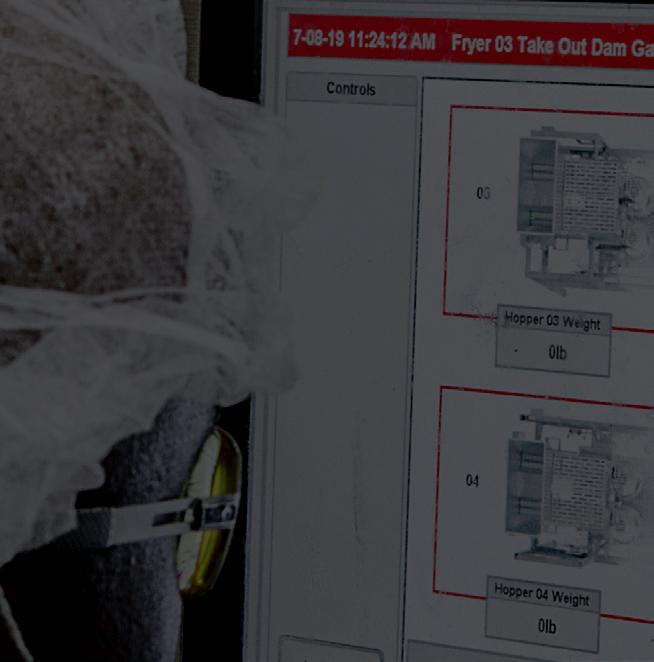
• Check weighing and seal checking
• Controls and information systems
91 97 98 34 108
• On-machine and process area seasoning application

94 116
We are successful when you are successful. That’s why we apply creativity, engineering excellence, and determined perseverance to every project to help our customers get the performance their business demands—whether measured by flavor, efficiencies, sustainability, improvement, or innovation.
107
17 20
32 99 36 42 0842 2 ~2~ ~2 26
your best products to market.
LOOKING BACK. PRESSING FORWARD. ALWAYS INNOVATING. info@heatandcontrol.com | heatandcontrol.com Apr.
Oregon
21
04-06, 2023 Booth 304 Portland,
USA
Bush’s Tiered Strategy for CM/CP Partnerships
Robby Martin, senior packaging engineer at Bush Brothers & Co., is using a layered approach to contract packaging on a new multipack project. He explains navigating the testing and scaling phases of commercialization with several different CM/CP partners, and why up-front transparency is crucial.
Packaging World:
Tell us about your traditional multipack approach, and what you wanted to change.
Robby Martin:
We’ve been in club stores with eight-packs and six-packs of 16 oz. cans, which represent the right purchase size in a club store situation. Those are bulk-packed and shipped at the pallet level all the way to the club store location. Whatever the club brand is, it goes all the way onto the floor in that bulk-stack pallet. We’ve been in that format for over 15 years, using a fully enclosed paperboard carton with beautiful graphics that creates a great visual in the store.
But those eight- and six-pack multipacks are a bit too large for more traditional grocery retail, no?
That’s right. While soup and some other categories have been doing some smaller multipacks in grocery retail for years, we never had much luck making that work for our products. Still, we think that there’s a market for multipacks that are more of an appropriate size for opportunities in regular grocery retail, and we just need to get the solution right to succeed.
Why haven’t you gotten these smaller multipacks to work?
When we get down below a certain size—generally a six-pack is the smallest we do—our high-speed cartoning equipment can’t always go down that small. Or, if we get down to a two-by-two four-pack of round cans in a carton, then we remove the opportunity for an interlocking pallet pattern. At that point, you are column-stacking with even smaller containers on a great big pallet for shipping. That’s a problem for us from a secure shipping standpoint, and it’s a problem for a retailer— not for club store, but regular grocery retailer—because they’re not going to put pallet loads of those on the floor the way a club store does.
So, we have both palletizing issues to consider on our end-of line, and post-delivery distribution issues by the retailers themselves within their system.
And your existing equipment isn’t up to the challenge anyhow, correct?
Yes, mostly. To date, we didn’t plan for our equipment to run those smaller packs. While our equipment can produce the smaller packs, that’s not the only issue. We’re casing the four-packs into six-packs of four-packs, which gives our retail partner a way to distribute them to their stores once they receive them. So, the goal is to be running cartons through a carton machine then putting them in cases, all automatically. But, we don’t have a line installed to do that today. So, for test purposes, and probably even for any initial rollout that could follow, we’re using contract packaging.
What does the vendor selection look like when it comes to contract packagers?
Obviously, they have to be capable of filling the need to begin with. They need to have capacity, and we need to be able to tolerate the cost. We get those big “C” words out of the way first.
And we certainly start with folks who we have worked with before. We know enough about them to consider why they would or wouldn’t be a good fit for an application. “Have they done work for us before? Do they do it well? Do we have a good relationship?” Those are pretty high on our list.
After that, it quickly gets into other, more complicated factors, like: How well do our systems work with each other? How do we maintain food safety? How do we maintain traceability? And how do we make sure we know how we’re flowing the cash and maintaining the inventory records that we need to?

22 PW FEB2023
Robby Martin, senior packaging engineer at Bush Brothers & Co.

CPA’s Busiest Event Calendar Yet Unfolds on Heels of Record-Breaking Conference
The Contract Packaging Association kicked off the year with an early tradeshow in Las Vegas—the Winter Fancy Food show with two full towers of CPA member products and capabilities. The show was a success, and a booth was secured for the 2024 show. Trade shows continued with additional member towers into March with the Natural Products Expo West in Anaheim, Calif. and a return to SNAXPO in Orlando, Fla., this time with a large CPA branded contract manufacturer and packager CM/CP pavilion, increasing the association’s presence at the show. CPA will also attend the international Interpack show in Dusseldorf, Germany May 4-10. To see CPA’s 2023 event calendar visit pwgo.to/7900
CPA hosted its annual event: ENGAGE – The Contract Packaging and Manufacturing Experience in San Antonio, Texas in February, with a record number of registrations, attendees, and overall event participation. This annual event was joined by F4SS: The Foundation for Supply Chain
Solutions which brought more brand representation to the show. At the show, awards were announced for The Strategic Sourcing Award which recognized the most effective and innovative use of a CM/CP, along with a CPA Hall of Fame and two Outstanding Contribution Award winners.

CPA continued its support of the advancement of students who are pursuing a degree in packaging or a packagingrelated field through its scholarship program. The organization also helps individuals who are looking to improve their professional background and/or increase their skill set in the packaging world.
The CPA says it proudly offers the following scholarships: the Contract Packaging Association Collegiate Scholarship with three individual $1000 scholarships, and the Contract Packaging Association Professional-Certification/WorkplaceGrant Scholarship with a $2000 award. To apply, visit pwgo.to/7901. PW
23_000124_Packaging_World_FEB Mod: December 19, 2022 4:58 PM Print: 01/06/23 3:09:57 PM page 1 v7 π WE'RE WILD ABOUT PAC AGING ORDER B M FOR SAME DA SHIPPING COMPLETE CATALOG 1-800-295-5510 uline.com 24 PW FEB2023
Was there anything unique in vendor selection in this four-pack project?
In the case of a test like this one, where we’re re-handling finished product into a different configuration to conduct a test, and possibly even to initially launch, we’re having to then make decisions on some less obvious considerations. We also have to consider where they are located. Because if we’re going to have to move product to them, have it converted, and then get it back, then where they are in relation to our shipping points—which are our two facilities in Wisconsin and Tennessee—is important. And in many of these cases, most of the volume may ship from only one of our facilities. So, where the contract manufacturer is located can be a big factor. Even when they’re relatively close—say 200 to 250 miles—it’s very expensive moving that product back and forth.
Who foots that bill?
In test mode, we eat that cost. We live with the cost because it’s about being sure we execute the test correctly, so we get a good read of the market. But should we decide we’re going to stay in market, or expand that work, then we are far more likely to look harder at how we could do it internally. Or if not internally, we ask ourselves if we have a partner that could handle the greater scale, even if we had to provide some equipment for them to do so. This might be someone that already handles a lot of our outbound shipping, like a local 3PL to our plant. There’s a good chance that we could move it back there.

Connect with Suppliers Fast
PMMI ProSource is a free online directory with 900 categories of validated suppliers of packaging machinery, materials, and service solutions. With a powerful search engine and the ability to filter solutions by machine feature and package type, ProSource brings vetted suppliers to you. Visit www.prosource.org today.

It sounds like a tiered or graduated network of partners for different phases of product launch. How have you moved work around for this current four-pack project?

The partner supporting our test phase is about 200 miles from our producing plant. We have done some really successful projects with them. They operate manually—literally, they’re manually doing the cartoning—and they’re good at making fixtures to accomplish that. They like
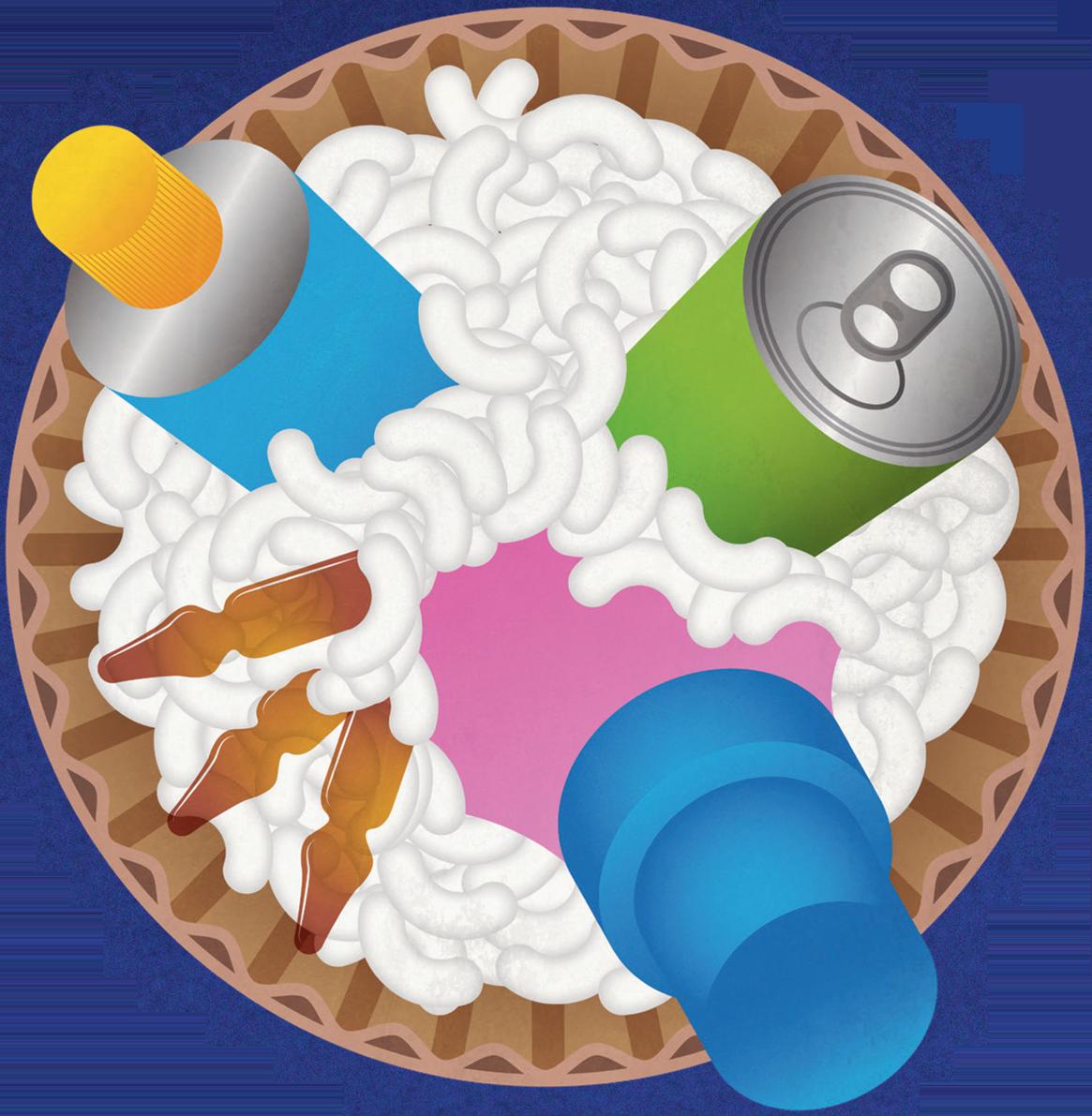
For show information: Messe Düsseldorf North America Tel. (312) 781-5180 _ info@mdna.com www.mdna.com For hotel and travel arrangements: TTI Travel, Inc. Tel. (866) 674-3476 _ info@ttitravel.net interpack PROCESSING & PACKAGING GERMANY 4 – 10 MAY 2023 25
to say they supply labor to our problem. They have helped us by completing the initial inventory builds and replenishments for our test.
All manual seems fine for a test, but not to scale. What would be the next phase?
Even if we aren’t sure we have the space or the appetite to spend the capital in our plant to automate this function, we would need to address the over-and-back nature of how we are executing the test phase. With the contract packager, we ship them product in the original primary pack format, they convert it, and we bring it all the way back to our producing plant or a nearby 3PL provider we use for shipping orders. It just incurs too much transportation cost and risk to be a sustainable process in the long run.
One of the biggest factors that doesn’t keep us from testing with a partner—but often keeps us from fully commercializing with that same partner—is systems integration, electronic data interchange (EDI), and the like. A more local 3PL’s ability to actually ship our orders and maintain traceability is a must-have for full commercialization. More complete systems integration is crucial so that we can count on maintaining traceability, accurate inventory records, and keep as many transactional activities as automated as possible.
The 3PL has a lot of factors in their favor, but can they actually make the four-pack formats?
Not yet. Even if we have to get someone up to speed on the actual capability, we still might move to the 3PL where the systems integration pieces are already in place and they transact orders for us every day. But rather than make that investment in-house, or with a 3PL, just for a test up front, instead we take the hit on what it costs to run the tests at a more manual facility. We know it’s going to stay contained to a certain number of stores, or a certain constrained geography where you’re going to distribute the four-packs for the test. During that time, we are just taking the hit on cost, but crucially, we’re finding out what value we have in the marketplace.
Say you move packaging operations to your local 3PL, and the fourpack continues to do well over some time. At what point does a brand owner start to consider taking the project completely in-house?
This isn’t a very satisfying answer, but it really depends. Let’s say we rolled out these four-packs nationwide. That still doesn’t mean we’re going to be shipping entire truckloads of this format, because we’re probably not going to see retailers order full truckloads. So, it’s still going to be mixed product orders, right? Because if it was going to be full truckloads, then we would have spent our money getting our original partner’s systems upgraded to become EDI-capable and system-capable instead. Because they can make the product correctly already.
But since we’re not going to be able to just have them ship only that product, and we’re not going to be able to ship it in the quantities to make that make sense, we have reason to look at bringing it back to our plant, or back to a more localized 3PL even if it changes the investment from systems investments, to physical equipment or other capability investments.
Your contract packaging business moves around from partner to partner at different phases of commecialization. How do you manage taking business away from one partner in favor of another? Part of the key to making this work is transparency, both from us and from our partners. They tell us, “We may make fixtures, and we may even store a little bit of product, but what we really do is we provide labor. We sell you labor. We do, mostly manually, things you either can’t do, or don’t want to do yourself. That doesn’t mean that we want to grow to the entirety of your scale, because what we’re really good at is getting labor together to attack problems for our customers.”
Because they are transparent with their core competencies and what they do best, we’re able to say, “If this really takes off, we have to figure out another answer.” Up front openness on those conversations is a huge deal.
It’s just an important element to be continually talking about what is, or isn’t, helping this work. We all have to have some agreed-upon understanding of what our pain points look like. What does that trip point look like? What is that triggers you to say, “Hey, we have to make a change here?”
How’s this multipack project going for you so far?
We’re just now, after a few months of selling in this particular test, beginning to talk about how we are going to solve for next steps. Are we going to add more capital equipment on our own line, so we could at least build the pallet? Since we know that doesn’t work for a retailer, that answer is not the whole solution. Are we going to build pallets, then rehandle it to get it cased? Who is going to do the re-casing part? We’re just starting to think of questions like that now, what we could actually need to tackle as we talk about how we could go bigger, go larger, go more permanent with this, assuming we ultimately make the decision to do that.
It sounds like you have some big decisions on the horizon. How do you handle your vendor relationships as you make them?
It’s important that they [contract packagers] understand up-front what you need them for, what you’re contracting with them to do, and most literally, what you’re using them for. And it’s important for you [brands, CPGs] to understand that at some point, your scale may be out of their comfort zone. They need to have the right to say, “We’ve probably helped you much as we can really help you. We’re not going to dump you, but you’re paying this much, and there’s got to be better ways of doing this.”
We love being important to our partners, but if we’re too important to them, then we can start feeling constrained. If we’re a halfway decent customer—and it is important to us to be a good customer—we’re feeling constrained about how quickly we can pivot away from them. We don’t want a trail of used up, unfairly treated partners in our wake. Because the next one’s going to say, “I know what you did to so-and-so on that four-pack product Packaging World wrote about. I’m not sure I want to take a phone call from you guys.” We don’t want to become that, either. That’s why mutual, up-front transparency is one of the keys to good relationships between our contract packagers and us. —Matt Reynolds
26 PW FEB2023
It’s important that they [contract packagers] understand up-front what you need them for, what you’re contracting with them to do, and most literally, what you’re using them for.

CM/CP Rides the Wave of Adult Ice Pops, Pouched Alcohol
Adult beverage branding and marketing firm Iconic Brands merges with contract manufacturer/packager TopPop Packaging to address the rapidly growing market for RTD cocktails and adult ice pops, as well as healthier options for wine and spirits.

RTD/RTF adult beverages
By Anne Marie Mohan, Senior Editor
Amityville, N.Y.-based Iconic Brands was founded as a lifestyle branding company with expertise in developing—from inception to completion—alcoholic beverages, with a focus on celebrity branding. TopPop Packaging, purchased by Iconic in July 2020, is a contract manufacturing and packaging company that specializes in malt-, spirits-, and wine-based products in singleserve exible packaging. Together, the two companies, soon to be renamed TopPop Innovative Brands, Inc., are delivering on some of today’s top trends in the alcoholic beverages market. Among them are ready-to-drink (RTD) and ready-to-freeze (RTF) cocktails in pouches and sachets and better-for-you, better-for-the planet adult beverages that are sustainable, ethical, and authentic.
Flexible pouch & stick-pack packaging
According to Grand View Research, the global RTD cocktail market, which includes RTF drinks in exible sachets or squeeze pouches, was valued at USD $782.8 million in 2021 and is expected to expand at a CAGR of 13.4% from 2022 to 2030. A number of factors are driving this expansion, including the growth of the at-home cocktail market resulting from COVID-19 lockdowns, greater health consciousness among consumers, with RTD beverages typically containing less alcohol by volume (ABV), a desire, especially among Gen Z consumers, for new avors and tastes, and the convenience of premixed, portable adult beverage options.

In 2021, a survey conducted by Public Opinion Strategies for the Distilled Spirits Council of the United States (DISCUS) found that premixed cocktails were the fastest growing spirits category in both revenue and volume. Nearly two-thirds of survey respondents said they considered themselves to be a regular or occasional consumer of RTD beverages.
Another market where consumers are turning to better-for-you and better-for-the-planet alcohol options is in the wine industry, which is experiencing tremendous growth in vegan organic products. These wines are made without the use of animal products or byproducts, from farming to vini cation. In mid-2022, one online retailer of wine products reported that sales of its vegan options had grown 51% since 2019—a trend that is expected to continue.
Iconic Brands’ agship product is Bellissima Prosecco and Sparkling Wines by Christie Brinkley, a vegan product made with organic grapes
28 PW FEB2023
Among TopPop’s offerings are adult ice pops in exible sachets and juice and water products in stand-up pouch packaging.
WHAT YOU’LL LEARN
that also includes a new zero-sugar, still wine variety. “We bring to life brands that are honest, earth-friendly, and of premium quality,” says Iconic. “Our brands lead change in their category while committing to make a difference for a sustainable future.”
Following Iconic’s acquisition in 2021 of TopPop and its 30,000-sq-ft Marlton, N.J., manufacturing facility, the company quickly expanded, adding a second production facility in Pennsauken, N.J. The new facility, which covers 65,000 sq ft, reached full-scale production in March 2022. Says Tom Martin, co-founder and former president and chief operating officer of TopPop and now interim chief executive officer of TopPop Innovative Brands, the move to rename the company marks a milestone in its evolution from a focus on adult beverage/celebrity brand building to a focus on innovation, development, and delivery of alcohol and non-alcohol beverages, foods, and frozen treats.
Full turnkey services for adult beverage options
TopPop Beverages was founded in 2019 to capitalize on the growing trend of adult ice pops for retail in ambient shelf-stable form in an RTF flexible-film format, with the product made with either spirits, wine, or malt. In 2020, its Marlton facility produced 40 million ice pops, packaged in long-form form/fill/seal pouches (sachets with four-sided seals) and stand-up pouches (SUPs) for both multimillion-dollar Fortune 500 companies and medium-sized businesses.

Said TopPop co-founder and CMO Laurance Rassin when the formation of the company was announced, “With lower shipping costs per unit and a lower environmental footprint compared to cans and bottles, our pouch packaging solutions are the most economical and sustainable way to reach the ready-to-drink market and more specifically, the ready-to-freeze market.”
According to TopPop, it offers a “360-deg tailored approach to manufacturing and packaging”—in other words, full turnkey solutions, from

29
TopPop runs its ready-to-freeze cocktails on one of its 12 vertical f/f/s sachet machines.
formulation to fulfillment. In the initial stages of a project, the company can help customers with their product formulation, creating recipes that meet their needs and the current demands of the market, followed by sourcing of all the ingredients and product blending. TopPop’s brand design services can assist clients in designing custom packaging, which it can also procure. With its vast manufacturing capabilities, the company can also handle a range of run sizes and an array of pouch shapes and volumes for multiple SKUs. And, once the product is packaged, TopPop can ship it to distributors, logistics companies, or directly to retail. If the customer does not require turnkey services, TopPop can use customersupplied packaging, formulations, ingredients, and supplied liquids.
With the addition of the Pennsauken facility, TopPop’s capacity has grown to 150 million units per year, including 150,000 flexible SUPs a day. The plant not only runs alcohol-based products, including adult ice pops and 10-oz cocktails in a pouch, but it also produces 6-oz fortified flavored water in a pouch, non-alcohol fruit-based smoothie pops, ice pops for dogs, and 6-oz juice pouches for various retailers. Martin estimates that pops make up 80% of the company’s business and pouches 20%; that number is expected to change to 60% pops and 40% pouches next year as TopPop’s pouch production ramps up. The company can also produce Jell-O shots and flavored shot cups.

“The Marlton facility is 100 percent alcohol production, and the Pennsauken facility is 80 percent alcohol,” Martin explains. “We expect Pennsauken to be 60 to 70 percent alcohol next year.
“The blend of Iconic’s wine and spirits and TopPop’s RTD, RTF, water, and juice products gives us the ability to offer a wide range of branded alcohol and non-alcohol products and production expertise that is not available in the market today,” he adds.
Well-equipped packaging operations

The increase in TopPop’s capacity from 40 million units to 150 million units in just three years has naturally entailed a large investment in equipment. TopPop began its packaging operations with two custombuilt, eight-lane vertical f/f/s machines for its 2-oz adult ice pops and then added three more eight-lane vertical f/f/s machines that could be easily changed over to run different sizes from 2 oz to 3.4 oz. It then added four four-lane machines that Martin says run faster, are easily changed over to run different sizes, and are more suited for smaller or larger runs, when combined side by side.
Most recently, it added three Sanko FR3 eight-lane continuous-motion liquid stick-pack machines, sold by T.H.E.M., that together can run approximately 5 million ice pops per week. “The high-speed Sanko machines took us to another level of speed and uptime, but they are not easily changed over to different sizes. They are more suited for larger runs,” says Martin. “We expect to add more Sanko machines as we grow.”
With the new facility, TopPop has also installed four new premade-pouch machines, with two more on the way. The equipment includes two rotary pouch machines from Viking Masek, two custom-built, single-head rotary machines, and two dual-head rotaries from an offshore supplier. All of the rotary systems are outfitted with Sneed Coding Solutions inkjet printing systems as well as secondary coding equipment.
For cartoning, TopPop recently enlisted EDM Machine & Tool to build four custom carouselstyle carton filling systems that present the cartons for filling, folding, gluing, and coding. “This has lowered our labor and increased our packout speed and uptime,” says Martin. “We have also added an overwrapping system to eliminate the shippers for our juice pouch products.”
30 PW FEB2023
A rotary pouch machine from Viking Masek fills premade pouches with RTD alcohol and non-alcohol products.
Operators case pack squeezable smoothie products for club-store distribution.
Pack-out options include cartons, SUPs, PET-labeled tubs, pop-up boxes, and larger-format display cartons. Case packing is done semi-automatically, due to the range of products produced by TopPop. Smallervolume jobs are case-packed manually.
According to Martin, the company plans to add a plastic bottling line, expected to be operational by summer 2023.
Sustainable packaging adds value
In addition to being on-trend with consumers’ growing taste for innovative cocktail options that are lower in calories and alcohol content, Iconic and TopPop also have the advantage of offering a packaging format that falls in line with the shift toward more sustainable packaging formats.
“The sustainable exible packaging business continues to grow rapidly, as brands and retailers are increasingly looking for U.S. packaging solutions that enhance their products and brand portfolios while also lowering packaging costs and reducing waste,” says Martin. “Our capabilities enable our customers to provide a healthier and more environmentally friendly end product to consumers.”
TopPop packages its ice pops and pouched beverages in PET and PET/aluminum formats. According to Martin, it’s also testing paper and polyethylene formats.
On the company’s website, it details the advantages of exible packaging versus glass and aluminum. One is that exible packaging requires signi cantly less water and energy per unit to produce. It’s also considerably lighter in weight and can be stored with much greater space ef ciency. “That means more units loaded onto each truck, which lowers not just the total cost of logistics, but also reduces the total carbon footprint of your product,” TopPop explains.
Another advantage it cites is product-to-packaging ratio. “A major component of sustainability is reducing the amount of source material required per unit of product,” says the company. “With signi cantly less material required compared to rigid packaging, exible packaging reduces the total waste throughout the entire product lifecycle.”
It also notes that exible packaging often includes added barriers to protect against product spoilage, extending the product’s shelf life and reducing the total food waste generated by traditional packaging.
Getting Started with Sustainable Packaging
Looking for information on how to get started with sustainable packaging? This Packaging World primer provides an overview on what sustainable packaging is, what’s driving the push for more sustainable packaging, and how to reduce the environmental impact of packaging. It also includes links to resources. Download this free PDF today at pwgo.to/7345

“The durability of exible materials also reduces the risk of punctures or damage to the package seal,” TopPop adds.
When asked if the company ever receives criticism due to the fact that its packaging is not recyclable, Martin says, “We do get some pushback, but the recycling avenues are growing, and the carbon footprint is four-times more favorable than plastic bottles.”
In addition to its healthier beverage options and more sustainable packaging, as part of its better-for-the-planet positioning, both of TopPop’s manufacturing facilities are 100% solar powered, ensuring the energy used to create its customers’ products are from renewable sources. In addition, Iconic has a history of supporting social and environmental causes, including Bellissima’s partnership in 2021 with NGO One Tree Planted, which resulted in the planting of 10,000 trees in California; its support of the Cleveland Clinic Lou Ruvo Center for brain health in 2021; and its donation of 30% of all Bellissima Prosecco’s DTC sales in April and May of 2021 to Direct Relief for the purchase of masks for doctors and nurses during COVID-19.
Plenty of room to grow
With its extensive lineup of packaging equipment and capabilities, soon-to-be TopPop Innovative Brands is well positioned to continue to take advantage of the RTF and RTD drinks market, as well as other pouched and bottled beverage opportunities.

Predicts Martin, “The alcohol pops market came into play around four years ago, but in a smaller way. It really grew in 2020 and has increased ever since. We expect it to continue to grow for the next three years.”
Of the pouched cocktail market, he says TopPop believes this will be a tremendous growth area over the next two years. “Cocktail pouches will be a staple for the on-the-go restaurant takeout business as well as in retail formats,” he notes.
As for the future of the company, Martin says its goal is to continue to grow at a rapid pace through brand development and acquisitions and through customer additions, new capabilities, and brand owner awareness. He concludes, “The merge of Iconic and TopPop gives us a direct and concise path of synergies and an eye on changing the market.” PW

31
A avored water product in an SUP exits one of TopPop’s six rotary pouch machines.
WHAT YOU’LL LEARN
Automation Lets Loud Labs’ Cannabis Oil Go National
A seemingly simple filling application shows that handling cannabis oils requires an understanding of their unique properties.
Pneumatics
By Matt Reynolds, Chief Editor
varying viscosities Fast changeover
In 2015, Jake Berry and Coley Walsh founded Pyramid Pens, which now operates under the Loud Labs umbrella, a brand selling various formulations of cannabis oil packaged in cartridges that could be used in a host of vaping devices. Using the well-regarded CO2 extraction process, the partners began formulating unique strains and flavors of THC and CBD oils for vaping. In fact, the brand’s innovative attitude toward packaging caught our eye back in 2019, visit pwgo.to/7899 to read about what they were doing then, and see how far they’ve come in what follows.
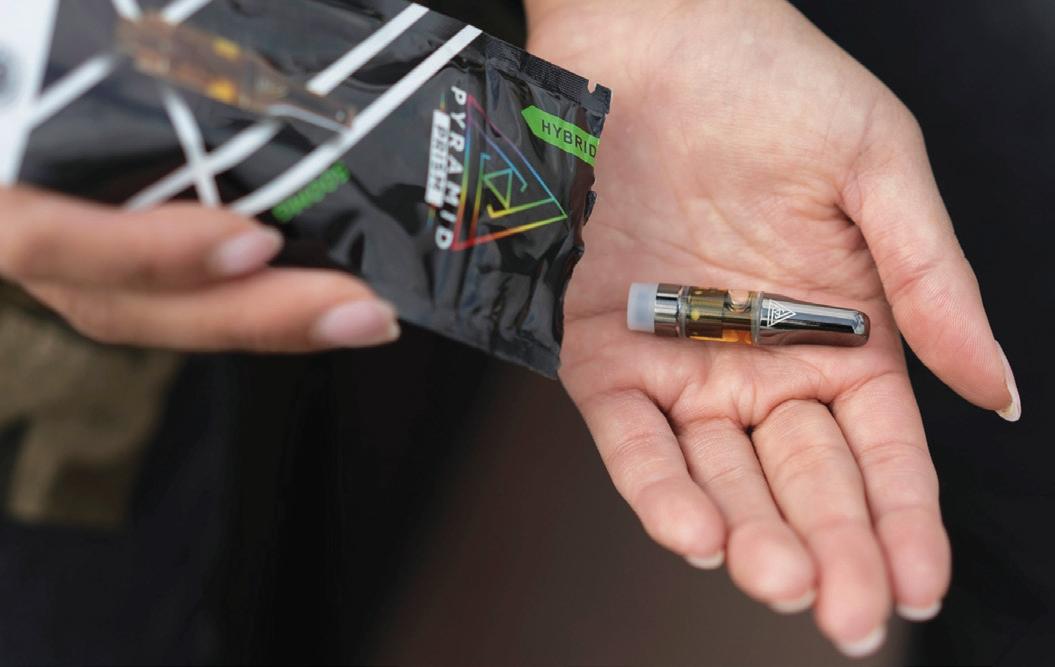
Today Loud Labs markets its Pyramid Pens line of cannabis formulated oils packed in cartridges and pods in Colorado and Michigan and is setting the stage for future expansion into other states. Expansion is a complex process of navigating each state’s individual laws and sales environments. The company offers a total of six oil formulations, each with its own characteristics of potency and flavor, concentrates, distillates, and CBD/THC combinations. The company also offers lines of infused pre-rolls and edibles.
Vape devices, which come in many different shapes, sizes, and tech-
nologies, all rely on cartridges filled with oil. Cartridges typically feature .3-, .5-, or 1-g of oil, depending on the type of device. Filling needs to be accurate for the optimum allocation of an expensive oil.
Anatomy of a vaporizer device filling machine
This IZR high-capacity unit is a bench-top machine, designed and built in the U.S. It appears deceptively simple with base, HMI, X-Y table, and upper oil path structure. The electric and pneumatic components are industrial grade Festo off-theshelf components for long life, smooth operation, and product availability. Such simplicity and ease of use are vital in some parts of the cannabis industry as the knowledge of automation is still evolving. Yet, this patented technology offers a powerful automation performance program.
At the top of the machine is a 500 mL capacity heater and reservoir. Producers pre-heat their cannabis oil and then introduce the oil into the reservoir, where the temperature is accurately maintained. The clear tube at the bottom of the reservoir provides a path for the oil to the dispense mechanism
with a syringe tip. When it is time for a changeover between different oil formulations, the reservoir, tube, check valve, and dispense syringe are quickly removed and replaced with the included spare component set. Changeover between oil formulations takes about a minute. The removed assembly is then cleaned and ready for the next batch.
Heat lamps on goosenecks for easy adjustment keep the oil warm for the extremely short time during flow from the reservoir to dispensing into a cartridge. At the upper center in this image is the dispense syringe operated by two Festo pneumatic cylinders. The upper cylinder raises the plunger to draw the oil into the dispense syringe. Once the proper volume of oil has been drawn into the syringe, the second cylinder lowers the syringe so that the needle is inserted into a cartridge.
handle
Printed pouches are the secondary packaging for vape cartridges by Pyramid Pens, a Loud Labs brand.
AUTOMATION 32 PW FEB2023 OEM APPLICATION
NOTE
“We would have kilos of compounds coming out of the extractor,” says Berry, CEO. “The compounds would then be mixed into our various formulations to create our unique offerings. And then we sat with small syringes to laboriously draw the oil out of flasks and dispense a specified volume into a cartridge.”
As cannabis oil cools it becomes more viscous and harder to draw and accurately dispense. This oil is sticky, and difficult to work with and clean up. The process of drawing and dispensing via syringe is physically and mentally taxing, not to mention slow and wasteful. Plus, each formulation has a different viscosity that changes the force on drawing and dispensing. Barry says that at best 100 to 200 cartridges per hour can be filled by a diligently working team member. As popularity for the Loud Labs’ formulations increased, the speed at which orders were fulfilled decreased. There was simply too much filling needed in too short of time.
“We wanted to grow a business utilizing our best insights into product development, the market, and customer needs, not spend a big part of the workday filling cartridges by hand,” Berry says.
Loud Labs needed a better way to produce a competitive and affordable product, while maintaining high quality. Automating the process seemed a potential solution. It is important to note, however, that since

The plunger is depressed by the pneumatic cylinder and the oil flows into a cartridge. Both pneumatic cylinders are easily adjusted by hand, utilizing mechanical hard stops.
The X-Y table on this IZR machine was originally designed by Festo for the speed and precision of handling samples in laboratory automation. It is extremely precise as it indexes the cartridges below the filling head and is industrially rugged. The EXCM X-Y table, HMI, temperature, pneumatics–everything–is controlled with a small Festo PLC located in the enclosure of the IZR.
The touchscreen HMI allows the operator to control and optimize the process through a simple menu of commands—point and click. All the complex programming is loaded and thoroughly assessed before each unit is shipped. Using a Codesys API,
Heated cannabis oil pours easily into the heated reservoir of the Thompson Duke IZR highcapacity automatic filling machine. On the machine, tooling holding fill-ready cartridges is secured to a Festo EXCM X-Y table. A touchscreen HMI allows the operator to control and optimize the process through a simple menu of commands.
the industry was in its infancy, automation solutions, good ones at any rate, were not as common as they are in established industries.
In 2018, Berry and Walsh became familiar with Thompson Duke Industrial of Portland, Ore., a wholly owned company of Portland Engineering that’s dedicated to the manufacture and support of automated solutions for filling and capping cannabis-based vape cartridges and pods.
“One thing about designing a cannabis cartridge filling machine that we knew was extremely important was solving the issue of variable viscosity of the oil,” says Chris Gardella, CTO, Thompson Duke Industrial. “Cannabis oil does not behave like any other fluid. Each oil formula will have a different native viscosity. Some formulations may be so thick that the oil will not pour out of the jar at room temperature.”
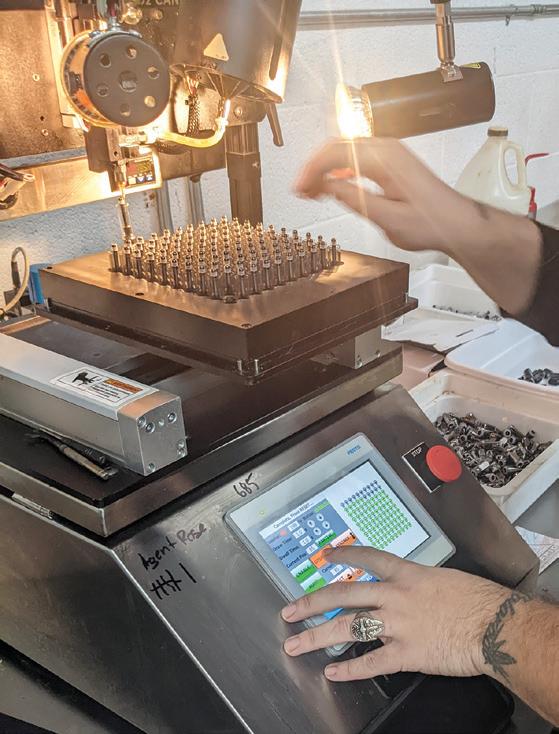
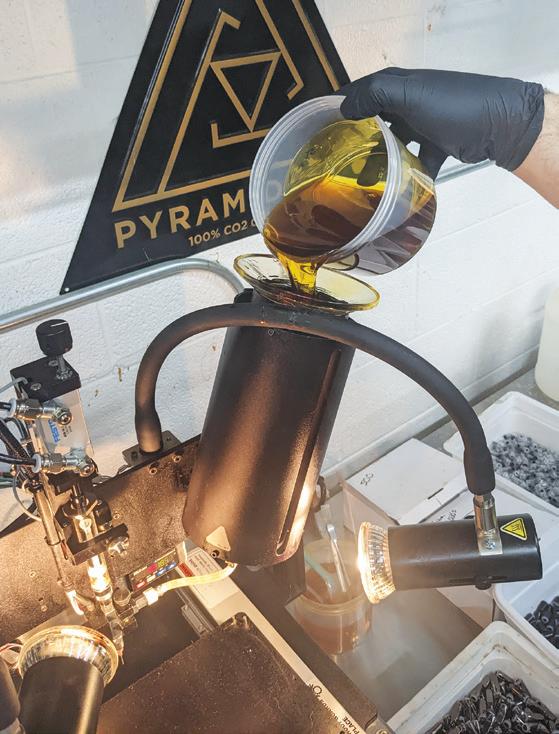
Gardella says that to facilitate the flow of oil, the material must be heated. The temperature has to be controlled precisely, however, as too high a temperature may damage key components of the oil, while too low of a temperature reduces the flow. Another consideration is that some formulations must be dispensed gently, or they can be damaged.
The Thompson Duke cartridge filling machine features an oil path that involves a heated reservoir and short tube running to a stationary dispense head. In this path, a pneumatically controlled actuator raises a syringe plunger, drawing in a specific volume of oil. A second actuator
a process performance and reporting system can collect all pertinent data on production and batch traceability, a precursor to the FDA requirements for that level of record keeping.
This LFP pneumatically powered four-ton mouthpiece fastening press operates completely by air pressure, with no electric components. Connect an air compressor to the LFP and begin operation. Operators dial in the required force anywhere between 0.5 and four tons with full variable force control. They close the door and flip the switch to the extend position. The door interlock engages, and operation begins. Flip the switch to the retract position, the press retracts, and the door interlock releases. Once again, Thompson Duke combines rugged industrial components and ease of use for customers seeking the benefits of automation. PW
33
lowers the syringe to an empty cartridge, and the plunger is depressed by the actuator. An automated X-Y table, which holds a matrix of hundreds of cartridges, accurately positions each cartridge in turn under the dispense head. Thompson Duke standardized on Festo pneumatic and electric components and systems for its machine based on part availability, quality, and support.
“Another design consideration is that each oil formulation will dispense at a different speed and as the oil warms it can be dispensed faster, which means speeding up and coordinating the X-Y table with the dispense head,” Gardella says. “Complicating this already complex process is the fact that the vaporizer device industry is moving toward many different cartridge configurations.”
Knowing the handling properties of Loud Labs’ formulations as well as they did and listening to the Thompson Duke personnel describe the design characteristics of the company’s patented IZR automated filling machine, Berry and Walsh thought they were talking with a vendor that understood their needs.
They were excited about the potential of an industrial grade system capable of filling 1,000 cartridges per hour, which would mean a single machine could do the work of at least four employees with higher accuracy and less waste. That level of throughput would be a game changer for the company not only in the number of cartridges filled and rapid response to orders, but also in labor savings. The business owners learned that Thompson Duke machines offer changeover from one oil to the next in less than 60 seconds, a benefit for a company like Loud Labs with multiple formulations.

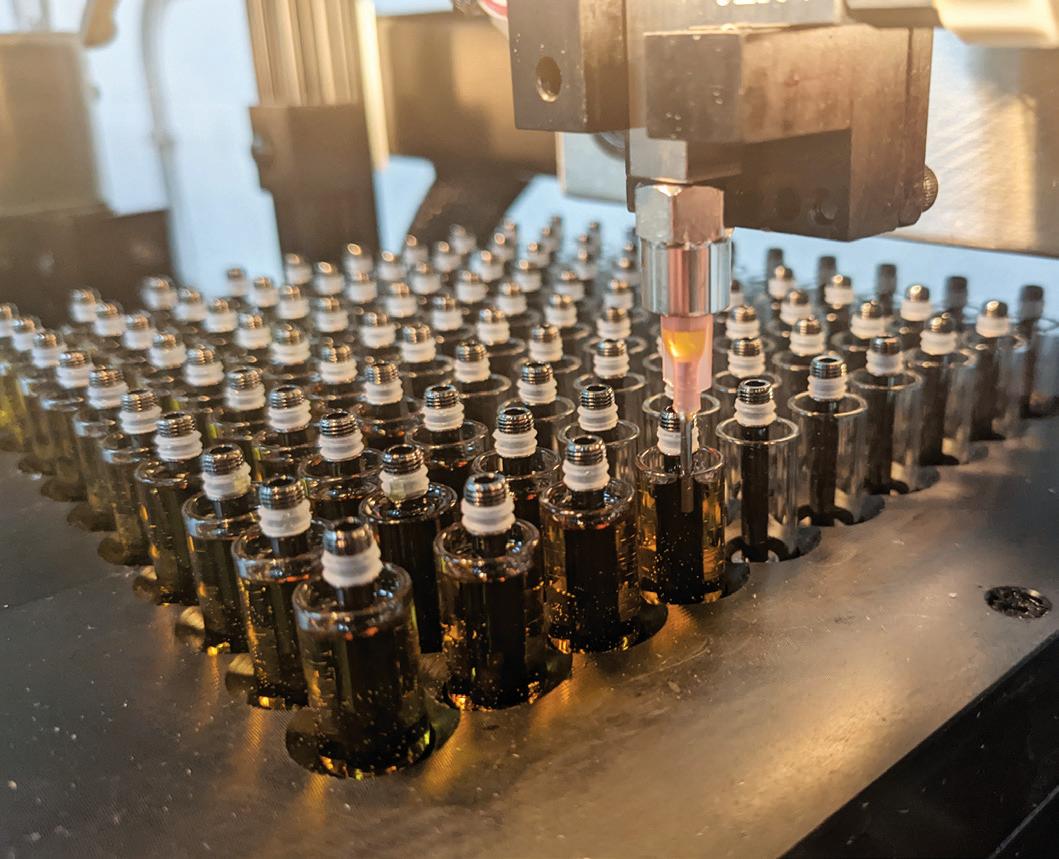
Expansion and diversification
“In the cannabis industry, consumers look for trustworthy brands— brands that deliver consistency in product quality and a range of options,” Berry says. “Today Pyramid Pens offers six different pure, potent, and clean cannabis oils packaged in cartridges compatible with any 510-battery vape device. It offers five different types of Pax Era pods, and three different reloads and disposable vapes. All of these are filled by state-of-the-art Thompson Duke automatic filling machines. Furthermore, Loud Labs has streamlined its manufacturing by automating the process of moving empty cartridges from shipping cartons to the tooling used on a machine’s X-Y indexing table. The company has also added a Thompson Duke LFP press for capping cartridges.”
Automation removed the physical constraints associated with manual processes, allowed for rapid turnaround times on orders, and provided precise quality control. Prior to implementation, a large order might take up to a month to fulfill, whereas now large orders can be filled within days.
“By partnering with Thompson Duke Industrial, Loud Labs has realized a rapid return on investment, bringing speed, efficiency, quality control, and cost-effective solutions to its manufacturing floors,” says Berry.
“There are three takeaways from Loud Labs automation experience,” adds Walsh. “Cannabis is a material with unique properties. The vendor community must develop automation and packaging solutions specifically for cannabis or at a minimum be prepared to significantly modify systems to accommodate the performance characteristics of the materials.
Thompson Duke added two additional facts to the discussion. The company was dedicated to technical support. Customers were assured of world-class support after the sale. Furthermore, Thompson Duke’s software made operation of a complex process simple for operators. Berry and Walsh purchased a Thompson Duke IZR automated filler as quckly as they could.
“The second takeaway is that this is a new industry. Cannabis companies will benefit from ease of use and high levels of support. And lastly, electronic record keeping, traceability, and Good Manufacturing Practices that conform to FDA-level regulations in equipment and process may, in the not-too-distant future, be required. Suppliers and end users must be ready for this.”
In the meantime, both Berry and Walsh says they are continuing product development, looking for ways to automate, exploring expansion into new states, and most importantly focusing on giving thier retailers and consumers a quality brand, one they can rely on. PW
Once filled by hand, a time consuming and wasteful process, hundreds of cartridges are now processed at Loud Labs in a matter of minutes cleanly and without waste with Thompson Duke automatic machines powered by Festo.
AUTOMATION 34 PW FEB2023
Filled and sealed cartridges ready for retail packaging in a CR pouch.
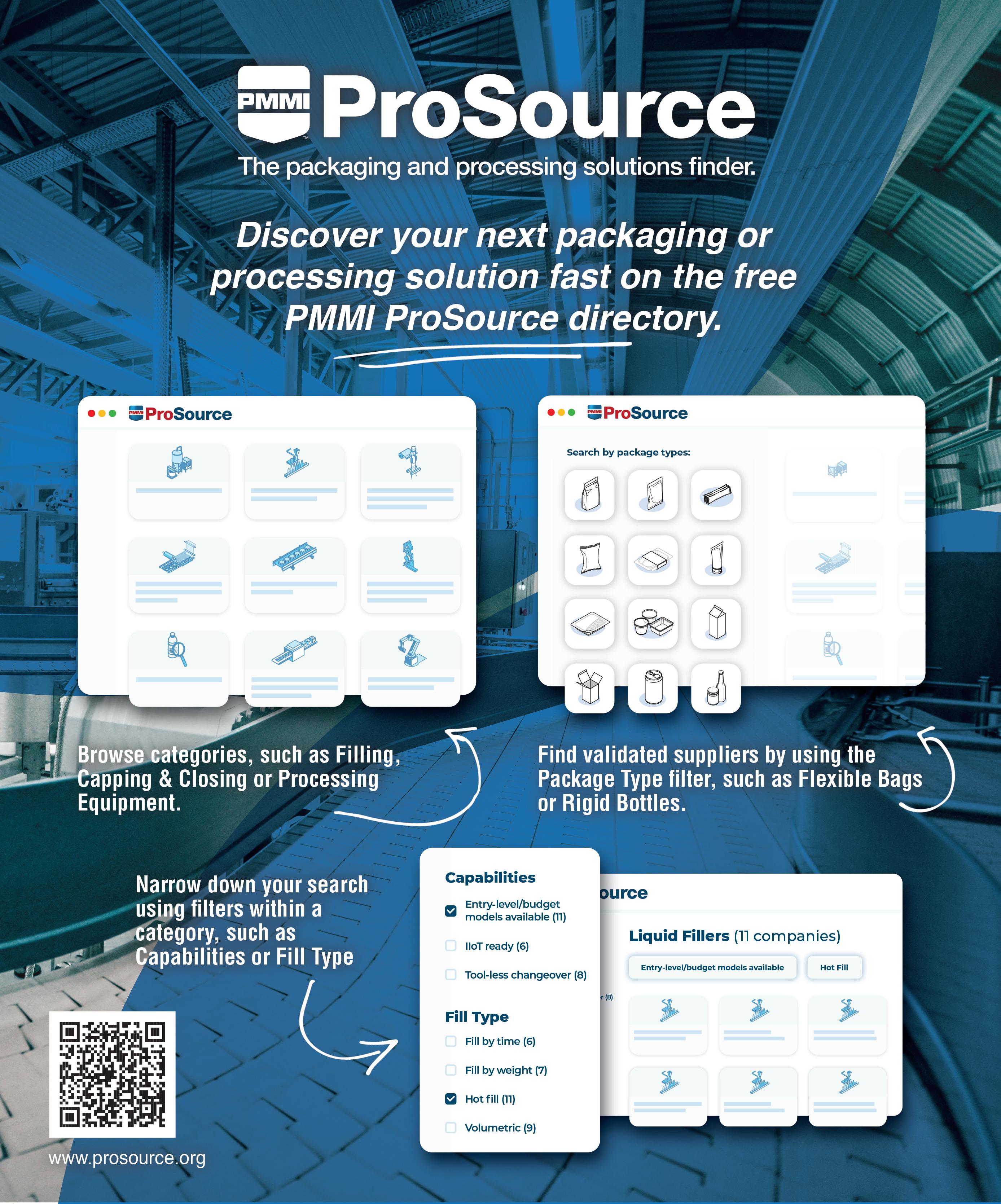
Packaging Automation Trends for Cosmetics and Beauty Care
Packaging World asked C&BC packaging veteran David Hoenig to scour the aisles of PACK EXPO International to see what trends he felt were notable. Smart automation and cobots both stood out, as did improved late-stage customization capabilities.
By David Hoenig, DH Technical Consulting, Contributor
October 2022’s PACK EXPO International in Chicago was the first major PMMI tradeshow that I’ve visited since the COVID-19 pandemic. Since it had been a while, I was intrigued to see what would be new for the cosmetics and beauty care industry, especially considering the inaccessibility of factories due to the pandemic, the shortage of technical people, and rising labor costs. Well, after many miles of walking the show floor, a lot of observations, and even more questions asked, it was clear that the focus of the show could be distilled into three main themes: packaging material sustainability, automation, and the digitalization of our world.
Most of the sustainability exhibits and talks at the show were related to food and high-volume consumer products. So while sustainability has been a major theme for cosmetics and beauty care brands as well, that is too big of a subject for this article. Hence, I will focus on automation and equipment, including the extensive use of the digitalization of “everything” and the extensive use of the internet to communicate and resolve equipment issues.
Smart automation via linear motor track systems
New and more integrated smart automation solutions and digitalized machine and plant processes were introduced by a number of generic automation suppliers.

My personal impression is that three companies lead the way: Beckhoff, ABB’s B&R, and Schneider Electric.
The keys to smart automation, as it replaces hard automation, are the linear motor tracks moving magnetic carriers—sometimes referred to as shuttles—in combination with robots, cobots, and integrated control systems. These smart package holders transport the workpieces individually and at high precision through a machine, and without being bound to rigid timing (on demand). By now, many automation houses—like Schubert, Syntegon Technology, Groninger, PKB, and Weckerle, to name a few—have incorporated systems like the eXtended Transport System (XTS) from Beckhoff, or the ACOPOStrak and SuperTrak from B&R, into their respective cosmetic and beauty care lines. The advantages of such systems are manyfold. They realize higher operating speeds, precision braking and acceleration, and individual product movement is controlled independently of other products, all
while obviating the need for buffer zones. These advantages are key in preserving the best possible product aesthetics, very important for cosmetics and beauty care, as they eliminate rough handling and contact between package components. Thanks to their modular design, new and existing systems are easy to scale and rearrange, thus minimizing new investment.
The newest innovations I saw at the show were the systems that makes use of levitating 2D product transports, with up to six degrees of freedom, called XPlanar system from Beckhoff, or ACOPOS 6D from B&R. The technology is based on the principle of magnetic levitation: Shuttles with integrated permanent magnets float over the surface of electro-

36 PW FEB2023
Beckhoff displayed dazzling movement of the carriers on the XPlanar table (above), while B&R demonstrated how the trackbased system and the magnetic levitation shuttles can be combined (below).
COLLABORATION IS ESSENTIAL!

ProFood World added a new category to its annual Sustainability Excellence in Manufacturing Awards. The Processor/Supplier Partnership Category recognizes the growth and importance of collaboration between processors and industry suppliers in protecting the planet.



Learn how past winners in this new category— Liffey Meats and Graphic Packaging International—worked in tandem to create a new PaperSeal tray for Lidl.
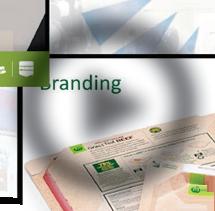
View video at pfwgo.to/meat. DEADLINE FOR ENTRIES IS MARCH 1, 2023.



























Learn how to enter at pfwgo.to/sema.
 Produced by Awards to be presented at
Produced by Awards to be presented at
CALL FOR ENTRIE
L k g
magnetic motor segments. They can move freely in two-dimensional space, rotate and tilt along three axes, and offer precise control over the height of levitation. Altogether, that gives them six degrees of motion control freedom. Dirt caused by mechanical abrasion, as occurs on conveyor belts and chains, is essentially eliminated. This prevents soiling and contamination of sensitive products and reduces cleaning costs.
I can’t wait to see the next compact assembly line made with this new levitating transport technology.
Cobots replace manual labor
The trend of replacing manual labor with cobots was very evident at PACK EXPO International. To refresh the reader’s memory, the term cobot refers to collaborative robots: robotic arms that have pressuresensitive sensors enabling them to work alongside people, while removing the need for expensive industrial guards and safety scanners. These cobots, due to their “manipulative” motions mimicking humans, are now automating the tasks of box/ case forming, case packing and palletizing—if high speed is not required.
Flexline Automation exhibited an integration of a Universal Robots cobot with its BoxEZ manual case former. The company also exhibited another cell with an additional cobot to automate the collation and insertion of the primary products into the formed box and the pushing of the case through case closer/taper.
Omega Design Corporation exhibited its Cobot Pack Assist for the Intelli-Pac unit, loading multiple containers into a formed box. This is track and trace case packing, labeling, and inspection. Omega claims that the cobot boosts efficiency (faster operation than manual case packing), significantly reduces human error, and frees the operator to focus on overall operation and product quality, not hand motion.
Digitization is Everywhere
The digitization of data, in combination with printing a code for each individual machine component, allows ordering replacement, or spare parts without the need to look them up in physical/paper manuals and catalogs. Although not new in social media and marketing, the 2D code printed on components—read by the cameras on our smartphone— have given the user immediate access to information about the individual component, including how to order (or actual ordering of) the parts. I saw this on high-value Sick sensors as well as on Wenglor low-cost photoelectric sensors, and I am sure this will become the preferred direction for all component manufacturers. PW
Late-stage customization is big in C&HB
A key to successful late-stage customization is quality, on-demand printing directly on secondary and tertiary packaging. This is not only a cost savings capability by eliminating labeling or preprinting boxes; it supports sustainability and eliminates supply chain disruptions for manufacturers and fulfillment centers alike. The ability to perform the printing at the last moment before shipping or picking for shipment offers a unique opportunity to customize the printing to individual consumers as a marketing tool. For example, wouldn’t you like to get a box with colorful picture of the products inside, or of what other products may go well together with what is being shipped?
Inkjet technology has undergone rapid development. A range of inks, from non-hazardous vegetable oils to UV-cured inks in many colors, are now available to be applied on different package substrates, mostly by continuous inkjet printing (CIJ) and by the drop-on-demand (DOD) systems. These both use piezoelectric technology (PIJ) to control the jetted ink flow. All suppliers are continually upgrading their products, enhancing their reliability, maintainability, resolution, readability, and compliance with GS1 standards, including GS1-128, GTIN-14. The trend is for the suppliers to integrate scanning and scanning software to verify that the code is correct and readable. Optionally, the suppliers incorporate Industry 4.0 elements (and by now some Industry 5.0, it seems) such as connectivity to factory ERP systems, other equipment, and through the cloud to the printer supplier for continuous equipment monitoring. Interacting with track and trace software is another feature becoming popular, especially for the pharma industry, but could be used for high value cosmetics and skin care products to detect and monitor “diversion”. Another development is the increased printing envelopes with the use of large, high resolution printing heads.
And Brooks Automation exhibited its SCARA type PreciseFlex Collaborative Robots in a palettizing set-up. The advantages of these SCARA cobots are in their simplicity, and in both horizontal and vertical reach envelope.
For example, Domino introduced its all-new Domino Cx350i, a highresolution DOD case-coding system. The company touts the high resolution, integration of the no maintenance features of the DOD, and what it says is an intuitive control system.

38 PW FEB2023
Omega Design Corporation exhibited its Cobot Pack Assist for the Intelli-Pac unit, loading multiple containers into a formed box.
Check out Packaging World ’s coverage of the Colorize Inkjet System from last year’s reporting on PACK EXPO Las Vegas, where the system was officially introduced.
Launched at PACK EXPO Las Vegas last year, the GSI Colorize Inkjet System made its Chicago debut in October, and impressed cosmetics packaging expert David Hoenig.

Graphic Solid Inks (GSI) made its PACK EXPO International Chicago-debut with its multi-color Colorize Inkjet Systems, featuring CMYK+White CIJ with UV cured inks. GSI combined NoLabel and Colorize Printing heads, with one control system, to be create vivid, highresolution printing plus bar codes on kraft corrugated. PW has covered this technology before, but I could see this having an impact specifically on cosmetics and beauty care.
Diagraph introduced its DOD ResMark 5000 high-resolution compact heads without ink hoses, featuring integrated control for up to eight heads, patented quick disconnect printer modules for easy swap, and localized wireless connectivity. Plus, the company claims to have the industry-leading ink throw distance up to 0.5-in.
Not to be outdone by inkjet coding, the laser coding market has also vastly upgraded itself in the years since I was at the last PACK EXPO International. Different UV wavelengths are offered, as well as powerful CO2 options, so more substrates, including metal, can be clearly marked and read by scanning hardware and software. The etching envelope has also grown significantly.
Videojet, for example, exhibited 60-Watt CO2 Laser Marking System with an etching envelope of almost 4 sq ft, and with life of 45,000 hours, it can save a lot of ink.
Another key element in late-stage customization is the ability to handle (and print or code) primary packages rather than having to get them preprinted. This is very beneficial for short runs or promotional customization, both common in cosmetics and beauty care. The technological challenge is to have flexibility to handle a wide range of formats on the same equipment, with minimal or easy change overs.
HSAUSA introduced the VFS-1000 Vertical Feeding System that takes a unique approach to the way folding cartons, bags, and pouches are magazined and delivered to a conveyor. Stand-up folding cartons, pouches, and bags are standing on an edge, picked, and placed onto a shuttle table, then pushed on to the downstream conveyor, presumably for printing or labeling. It is a batch operation, but the replenishment of the blanks can be done without stopping the equipment. The VFS-1000 is part of a family of modules that can be put together to automatically handle, print (or label), inspect or reject and stack up finished parts.
A common retail cosmetics vector for late-stage-customization is blister packaging. Sonoco Alloyd introduced the Aergo line of blister sealing packaging equipment. The Aergo line features heat, fusion, and RF sealing technology. Plus, it uses servo motions rather than mechanical, thus enhancing de-nesting capabilities, and can be scaled up with additional options. The Aergo SSL 11 station servo-driven machine at the show had all the necessary stations to handle both plastic blister and EnviroSense PaperBlister, and featured Alloyd quick-change heat seal tooling. Sonoco Alloyd has been touting their EnviroSense PaperBlister package as a way to contribute to a brand’s sustainability profile.
Most cosmetics and beauty care containers are sourced from overseas. To maintain purity inside the container in the interval between making the container and filling it, some manufacturers opted to have the container delivered to their filling operation already pre-capped. This way, no dust or dirt can enter the container. To handle these pre-

39
Sonoco Alloyd has been touting their EnviroSense PaperBlister package as a way to contribute to a brand’s sustainability profile.
capped bottles, the filling equipment needs to remove the caps, put the caps on a shuttle system, fill the open containers, and re-cap/re-torque the containers. While this complicates the fillers, it does have one significant operational advantage and one quality advantage. There is no need for unscrambling equipment and complicated set-up for changeovers, and there is no additional physical handling of the caps, further maintaining the original aesthetic of the caps without handling damage. Filamatic introduced an inline simplex filler with this capability.
PKB has started to offer this un-capping, to fill, to re-capping feature as well. For instance, I saw a video at PKB booth of a high speed filler performing the un-capping and re-capping).
Many suppliers touted remote access for equipment troubleshooting, all through the internet, and many times using the smartphones as the access and communication tool.
NITA exhibited a wide range of its SENTIANT labelers, and the focus in its booth was all about uptime, seamless remote monitoring, and maintenance access via the internet (or cloud). NITA claims that their labelers are the easiest to maintain due to 100% license-free, nonproprietary electronics and software, all synchronized servos (no PLCs, etc.), live tech support via the internet, self-diagnosing software system with in-screen parts ordering, and built-in preventative maintenance.
Equipment innovations for tubes in the cosmetics market
Tubes are a common package format in the cosmetics, body, and hair care industry, often in multiple sizes and artwork decoration. So, how do you make manufacturing more efficient? Easy and fast changeovers is one answer.
Citus-Kalix, part of the COESIA Group, introduced its latest highspeed simplex (one filling nozzle) KX1103 EVO tube filler for plastic and metal, capable of producing at 110 tubes/min. The manufacturer calls the machine “the next generation,” primarily due to the quick changeover. The claim is 10 minutes [of changeover time] to start a new production run. The equipment accomplishes the fast changeover with automatic servo-driven adjustments where possible, format set-up data registered in recipe, dedicated change parts that can be easily swapped (no adjustments needed and preferably no tools), and now more and more, step by step instructions on the HMI.
Tubes for cosmetics and beauty care have been mostly sourced from China. Problems in the supply chain due to COVID-19 from China created a demand for new tube labeling equipment. Pendergraph Machines introduced its tube pre-labeler TL-60, which was integrated with to a Prosys RT60 tube filler. Left- and right-hand versions were available for pairing with multiple tube filler models. The machine features quick change spindle tooling with recipe-based programs that can label 5/8in. diameter tubes up to 2.25-in. diameter and 3-in. to 8-in. long. The labeling machine, running up to 70 tubes/min, allows manufacturers to pre-label blank tubes, or over label decorated tubes, thus saving the need to order various artwork pre-decorated tubes. Plastic tubes and the labels can be recycled together.
Conveyors for cosmetics are also advancing
While some equipment trends that I saw at the show are pointing towards more linear servo or magnetic movers/shuttles, conveyors are still a cornerstone of most packaging lines. And no modern conveyor

system is truly complete unless it can handle multiple products without jams or time-consuming changeovers.
Advanced Manufacturing Technology is now providing adjustable rail systems (or the hardware used by others to upgrade their conveyors) based on calibrated, pneumatically energized/spring return piston actuators. A conveyor’s side rail positions can be set to an accuracy of 1 mm, simply by changing the air pressure. Settings can then be stored and recalled with the touch of a button.
So conveyors are not going away, and we still need to unscramble components. Gentle unscrambling and transporting are key to safe handling of cosmetic products, where aesthetics are key.
Manufacturers of horizontal motion conveying systems grapple with how to minimize vertical “rubbing” movement and constant vibration between parts being transported in linear transport chutes. Several manufacturers displayed a new concept of oscillating chutes that did not create vertical vibration. A profiled movement back and forth (camdriven linear motion) “pulls the rug” from under the components that want to continue moving forward due to the inertia imparted by the forward movement. Essentially, the backward movement is much faster than the forward movement. This can provide gentler means to move flat components, as well as powder. However, since all the manufacturers displaying these chutes at PACK EXPO focused on food products, none have attempted to explore the gentle handling of cosmetic componentry (highly subject to being damaged by rubbing against each other and against rails). Two examples I saw at the show: Heat and Control demonstrated its FastBack 4.0 Horizontal Motion Conveyor, and Layton Systems introduced its Rapid Return: Horizontal Motion Conveyor.
Several manufacturers displayed a new concept of oscillating chutes that did not create vertical vibration. A profiled movement back and forth (cam-driven linear motion) “pulls the rug” from under the components that want to continue moving forward due to the inertia imparted by the forward movement.
More generally speaking, I was thrilled to see so many advances exhibited and discussed at PACK EXPO International after my long hiatus, and the above are only the highlights that one traveler down the aisles of PACK EXPO was able to uncover. It can’t help but make you wonder what we’ll see next year in Las Vegas. PW
40 PW FEB2023









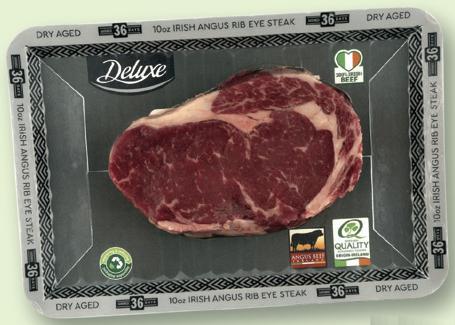






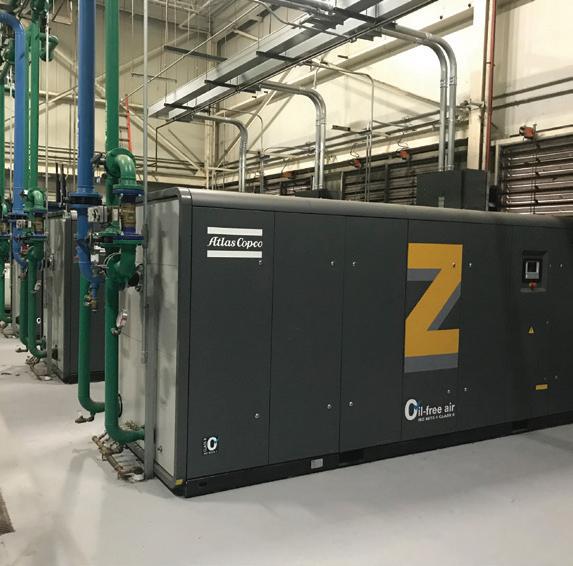



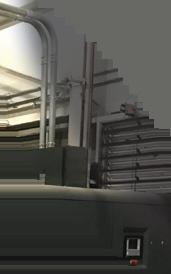

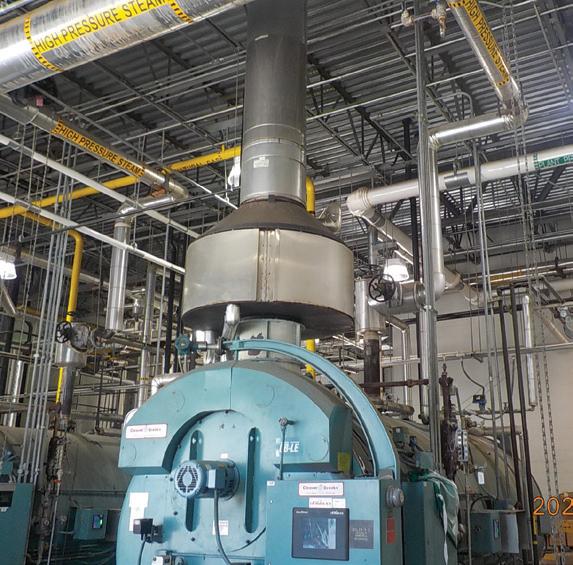


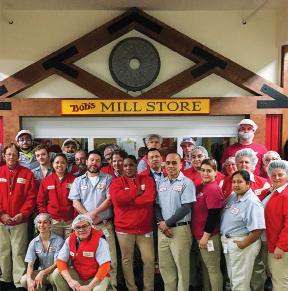










































CALL FOR ENTRIES
P uc Aw
year, P F W l recognizes outstanding food and beverage processing and packaging innovation projects via the Sustainability Excellence in Manufacturing Awards competition. Multiple awards will be named for projects such as:
Reduction in water and energy
Waste conservation
Pollution prevention
Packaging reductions
past winners such as Campbell Soup, Land O’Lakes, McCormick, Smithfield, Conagra Brands, Hormel, Hiland Dairy, Big Heart Pet Brands, Bob’s Red Mill Natural Products, Liffey Meats, and Graphic Packaging International. View past winning entries and learn more at pfwgo.to/sema
are due March 1, 2023. ENTER THE RECENTLY ADDED PROCESSOR/ SUPPLIER PARTNERSHIP CATEGORY! View a past winner’s video at pfwgo.to/meat THE RACE TO SAVE THE PLANET
Sustainability Excellence in Manufacturing Awards E cellence
Each
l
l
l
l
Join
Entries
Turnkey Line Handles Ampules, Vials
This flexible system runs 17 formats with a 30-minute changeover.
Lundbeck emphasized its need to be able to work without large accumulation in front of the packaging area. To achieve this, only a few products were permitted to be in transit between the upstream processes and the actual packaging process. Therefore, conventional feeding technology was not suitable.
Schubert developed a format-partindependent forming process for the partitions (left). Five pipettes are loaded onto one of the Beckhoff transport system’s movers (below).
To modernize the packaging of its medications for neurological diseases, Lundbeck sought a new packaging system for ampules and vials. The Danish pharmaceutical company specializes in diseases of the brain and has been active in neuroscientific research for more than 70 years.
The manufacturer markets products worldwide and requires highperformance and high-quality production. A new state-of-the-art pharmaceutical packaging machine that packs ampules and vials into cartons was needed to replace an existing system.
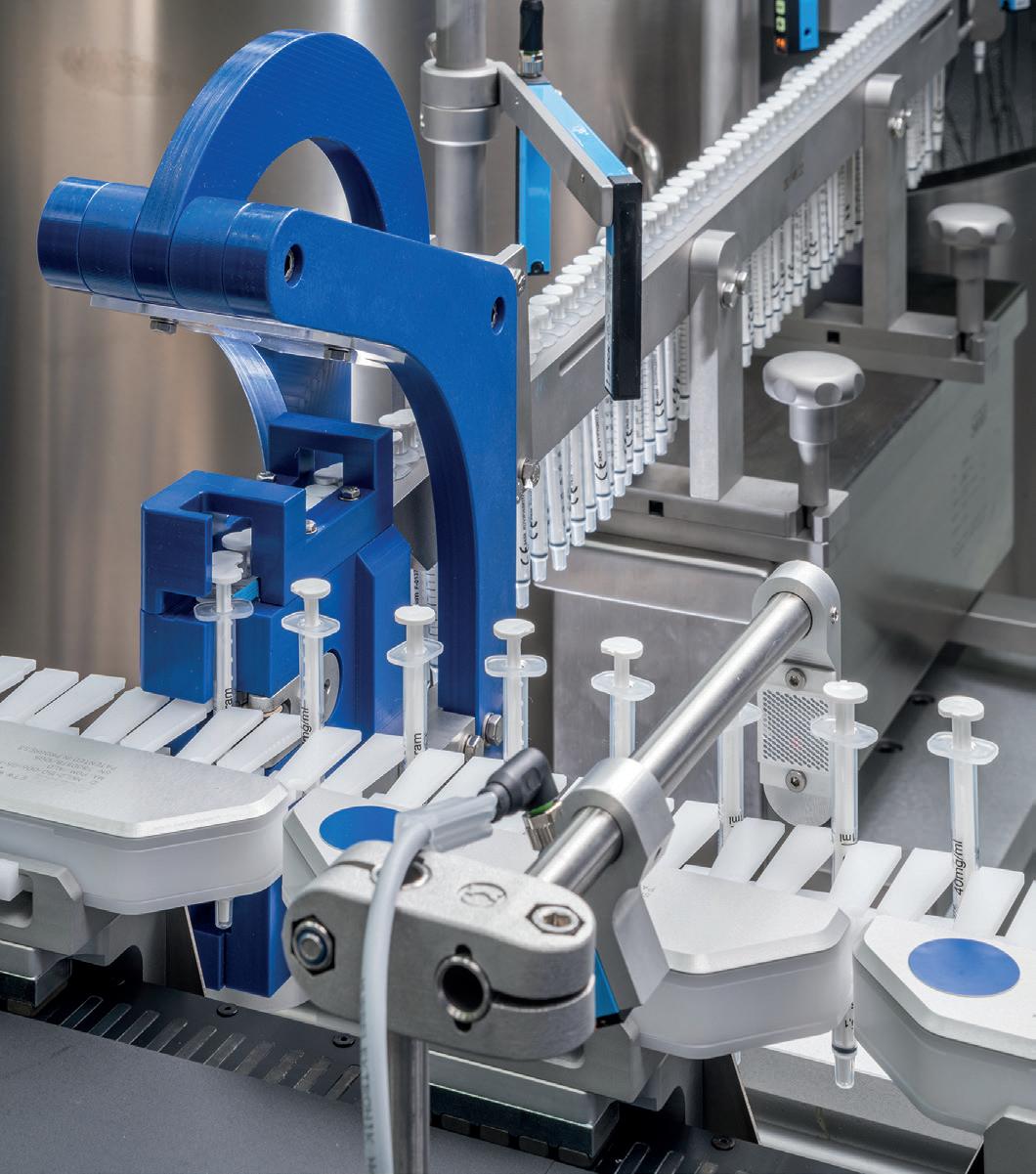
As these medications were already established on the market, there was no need to develop machine-compatible packaging with all the partitions and compartments from scratch. This accelerated the tendering process to just four months before the contract was awarded to Schubert-Pharma, the pharmaceutical division of Schubert Packaging Systems, parent company of Schubert North America.
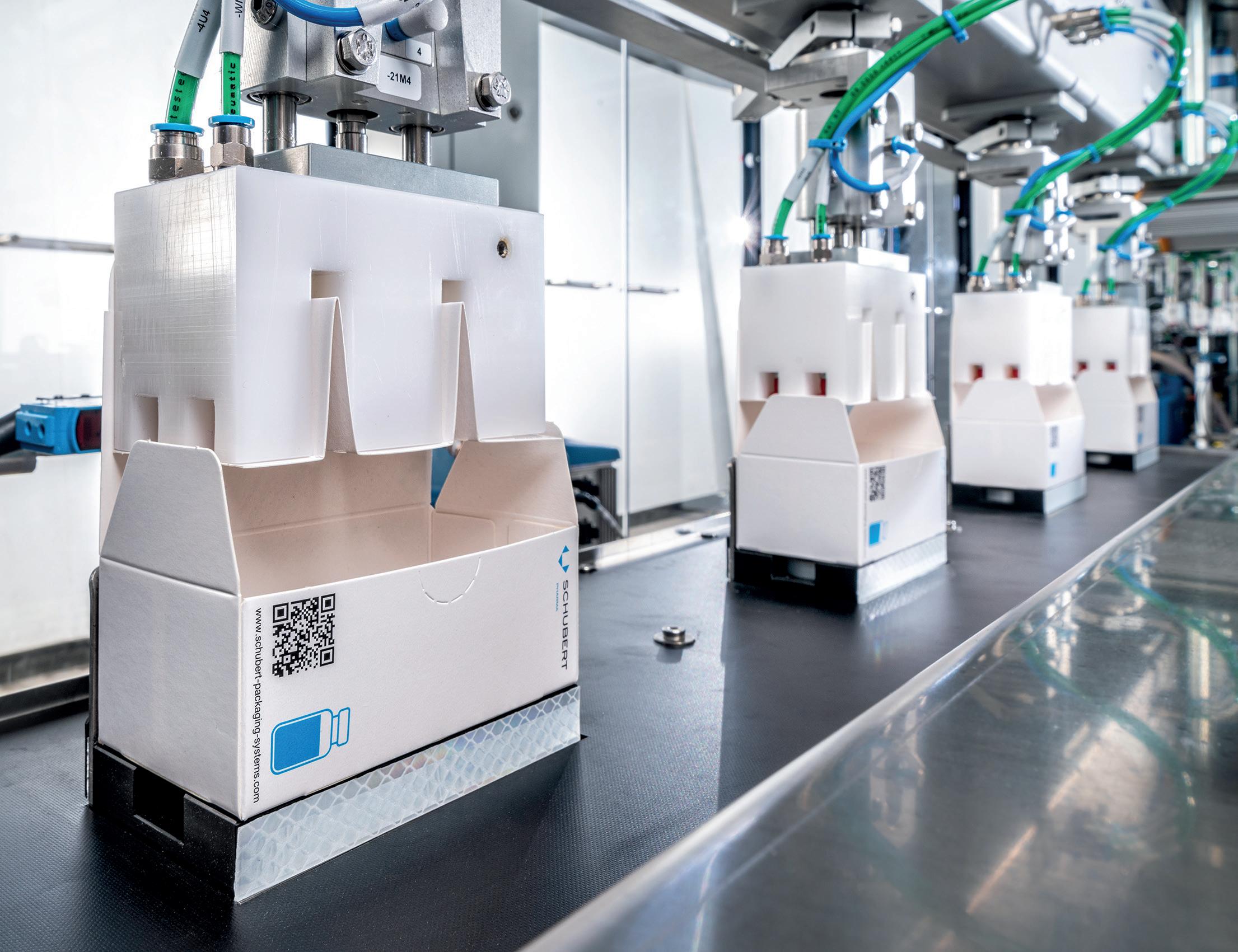
42 PW FEB2023
WHAT YOU’LL LEARN
Linear servo track system Bufferless infeed
To set up the packaging process as efficiently, reliably, and securely as possible, Schubert-Pharma developed and delivered a fully integrated, turnkey line with all system components procured by Schubert. The line consists of a Schubert cartoner, a B+S labeler, a bundler from Pester, case packer and palletizer. Schubert-Pharma solved the special, piece-precise feeding of ampules and pipettes through to cartoning by means of a small accumulation and the XTS transport system from Beckhoff Automation
To implement the entire process—labeling the product, packing into cartons, bundling the cartons, case packing, and palletizing in the production hall—a U-shape was chosen for the packaging machine. Thanks to the flexible design of the transport system, the pillars at the installation no longer posed an obstacle. Schubert also developed a universal forming process for the various inner frames, which is format-independent and therefore takes no additional time during format changeovers.
The packaging machine is designed to pack two sizes of ampules into one-, two-, five- or 10-count cartons. Furthermore, vials, some with pipettes, are packed individually into four different carton sizes. Partitions are used with all formats to protect the glass containers from damage. Each carton also is supplied with a patient insert or booklet, and is then labeled. The entire line process, from carton and partition forming, to loading the pharmaceutical products and package inserts, to closing and labeling, is handled with the aid of the Transmodul transport robot. This creates a safe, secure, and closed packaging process. Schubert’s experience in the pharmaceutical sector and advanced robot technology ensures that all specified product and packaging tolerances are met, the company says.
Piece-wise feeding
A special feature of the packaging machine is feeding the ampules from the labeler and the pipettes from the sorter. Beckhoff ’s XTS feed system delivers the products quickly and accurately to the cartoner’s loading area. Short buffering is possible with the process-safe feed. Thirty socalled “movers,” small independent transport modules, move on the rail-based system. They are equipped with corresponding format parts for transporting the ampules and pipettes.
Following automatic separation, five products each are loaded into a mover. Then eight movers are grouped together at the Schubert cartoner’s loading robot. The robot’s tool can pick up 40 ampules or pipettes at once and pre-group them into units of 10. From these pre-groupings, another robot takes the required number for the cartons waiting in parallel on the Transmodul.
The vials, already labeled, are then placed individually into the cartons. Once the package inserts have been added, the cartons are closed and labeled and move on to the bundling machine, the case packer, and finally to the palletizer.
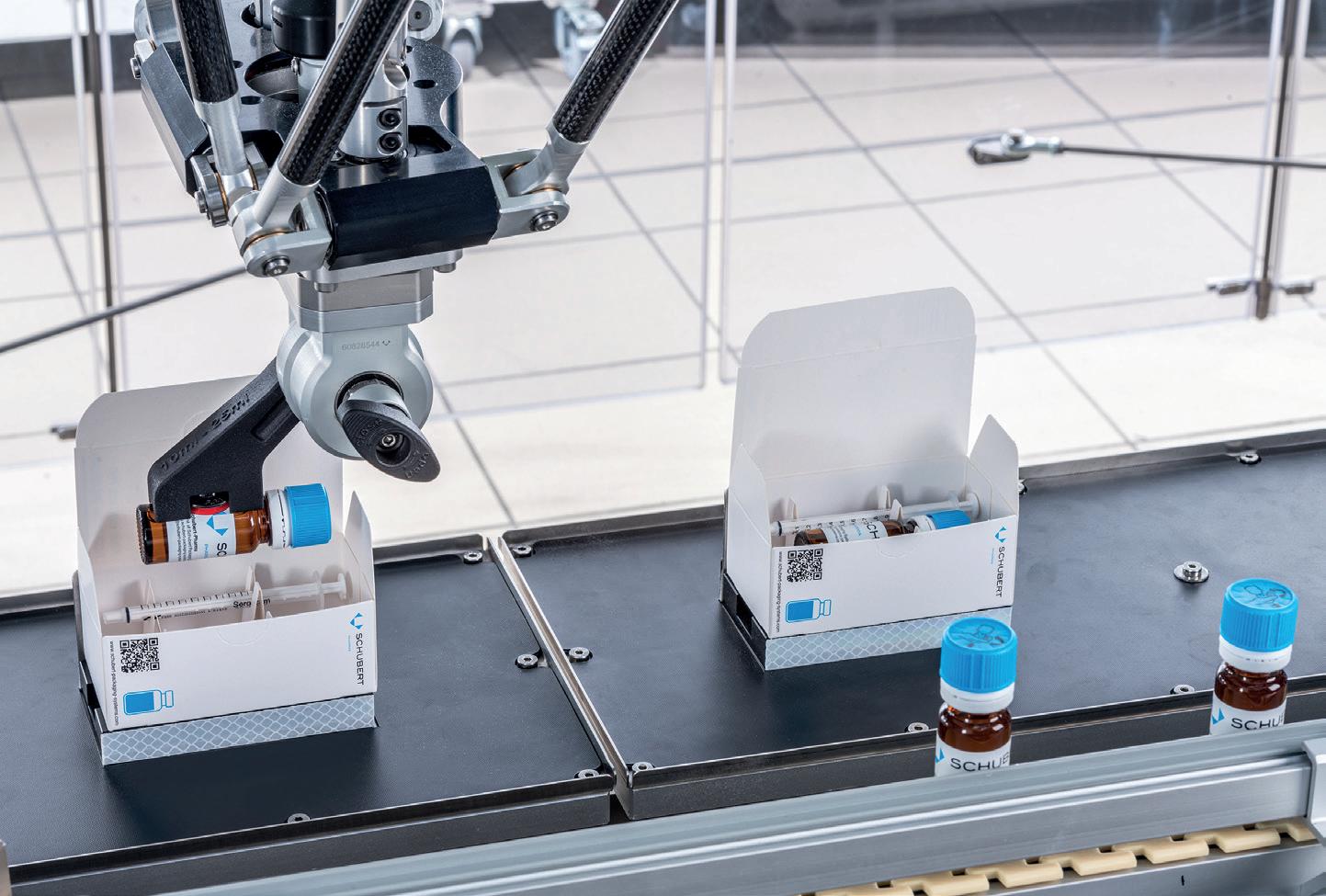
In total, the flexible pharmaceutical packaging line processes 17 formats and delivers an output of up to 420 products/min. Due to the line’s modular design and optimized carton-forming process, a format changeover takes only 30 minutes. “Thanks to the extremely high flexibility of the packaging line, the pharmaceutical manufacturer can now benefit from a significant competitive advantage in the market,” concludes Karin Kleinbach, sales director at Schubert-Pharma. PW
This article first appeared in PW-affiliated publication, PACK EXPO International 2022 Show Daily, on Oct. 23, 2022.

43
A robot picks up one pipette for each carton of vials.
Labeled vials are loaded into cartons.
By Caitlin Collins, Contributor
Four Packaging Design Trends for 2023

For most of us, 2022 didn’t exactly pan out the way we thought it would. Instead of experiencing the bliss of no longer being in lockdown and subject to pandemic restrictions, we encountered more global crises, from the Russian invasion of Ukraine to rising economic uncertainty. Many areas of culture and the economy have been impacted, and packaging design is no different, with consumers moving to invest in brands that bring them comfort, lightness, and honesty during trying times.
Every year, 99designs by Vista collects insights from the global community of professional freelance designers on those packaging trends we should expect to see in the year ahead. No matter what lies ahead for your brand in 2023, whether you’re launching a new product line or looking to spruce up your visual presentation, here are some of the approaches you can take to better connect with your target audience through your packaging.
1. Infuse your brand personality with diverse characters
From the Pillsbury Doughboy to Kellogg’s Tony the Tiger, if there’s anything the biggest brands in the world have taught us, it’s that a great mascot gracing your packaging can work wonders. In 2023, these cheery figures will be getting a refresh with brands playing with mascot variations, changing up their appearance across various
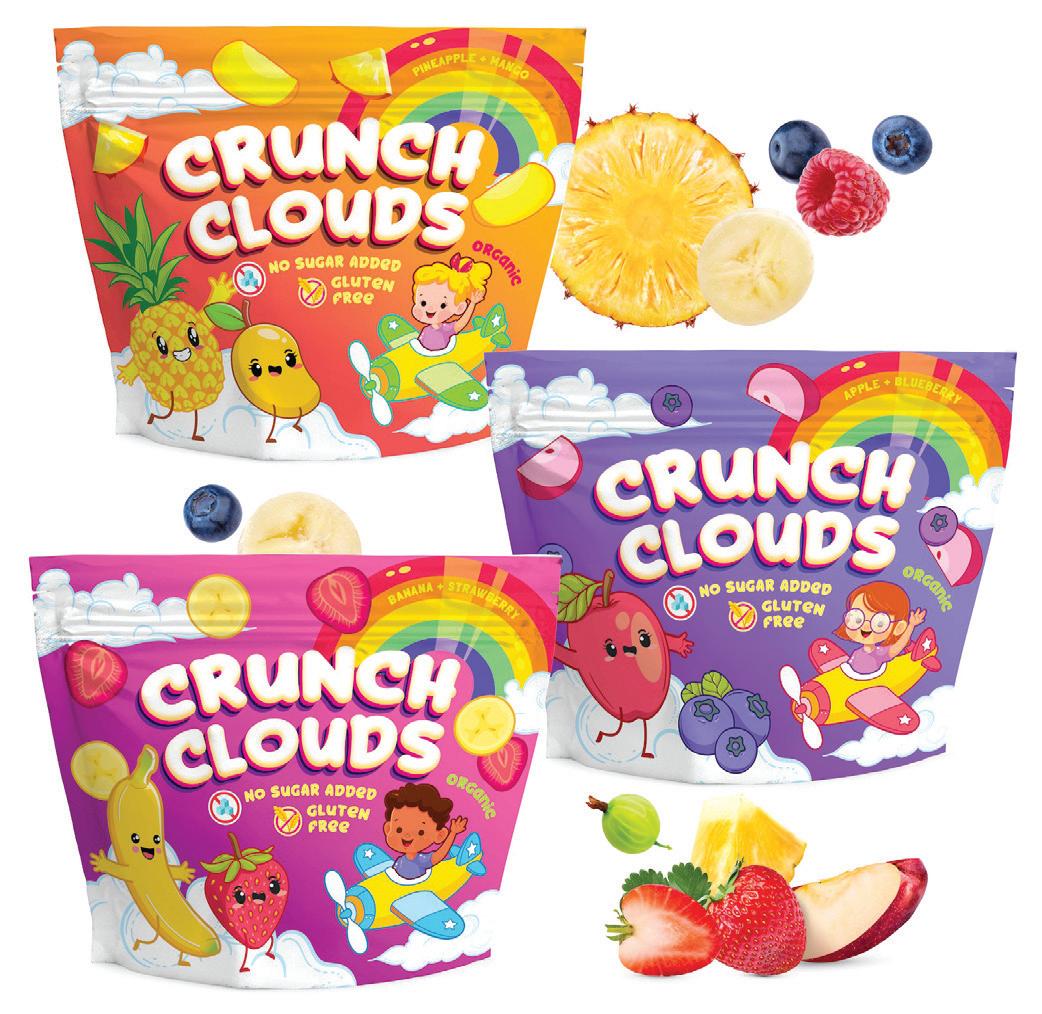
product types. From wearing different outfits to doing different activities, this approach to mascot design adds an extra layer of personality and uniqueness to each product within a range without losing any sense of brand cohesion. If you have an existing mascot and are launching a new product in the year ahead, this could be a great way to liven things up while still staying true to your brand.
If you aren’t keen on featuring a regular mascot, but want to make your packaging feel a little more personable, consider adding some cartoon charm, which is another trend identified for 2023. These cartoons feel akin to newspaper comics—simple and classic, as if someone effortlessly drew them while daydreaming in a cafe. These illustrations are cute, imperfect, and even a little silly, which can make your brand feel endearing and approachable. Add them to your mailer boxes to say a quick hello before your customers open them or to your product label to make people smile and show them you don’t take yourself too seriously.

2. Channel nostalgic vibes
In a world full of uncertainty, it’s no surprise that many consumers are seeking comfort, and brands are looking to past eras to provide it. With the increasingly popular trend toward a sticker-book aesthetic, we’re seeing the use of bright colors, sticker-like images, and doodles randomly spread out across packaging, reminiscent of a child’s sticker collection in the ’90s. The design feels carefree and happy, while offering a bit of intrigue as to what’s inside the packaging. This could be a particularly effective option for a limited gift box or to make a minimalistic design feel more playful and nurturing.
Equally, go a couple decades further back from there and you’ll find yourself in the ’70s, which is perfect for channeling the latest wave of vintage style gracing packaging design. Think groovy curves, lots of browns and warm hues, and retro serif fonts. People want to feel relaxed, and this aesthetic is casual and calming while still being sophisticated. That said, this trend works best when it connects
44 PW FEB2023
Cartoon charm designed by Surabhi Pitti on 99designs by Vista
Mascot variations designed by Daria V. on 99designs by Vista
Sticker Book Aesthetic designed by TikaDesign on 99designs by Vista
and represents your overall brand personality—it isn’t a one-size-fits-all. If you don’t want to adopt this style in full, you can simply try adding a curvy ’70’s typeface to your packaging to experiment and nod to the trend, or alternatively, explore the style in a limitededition product package or similar. Although this look cycles in and out of fashion, for the right brand, it has true staying power.
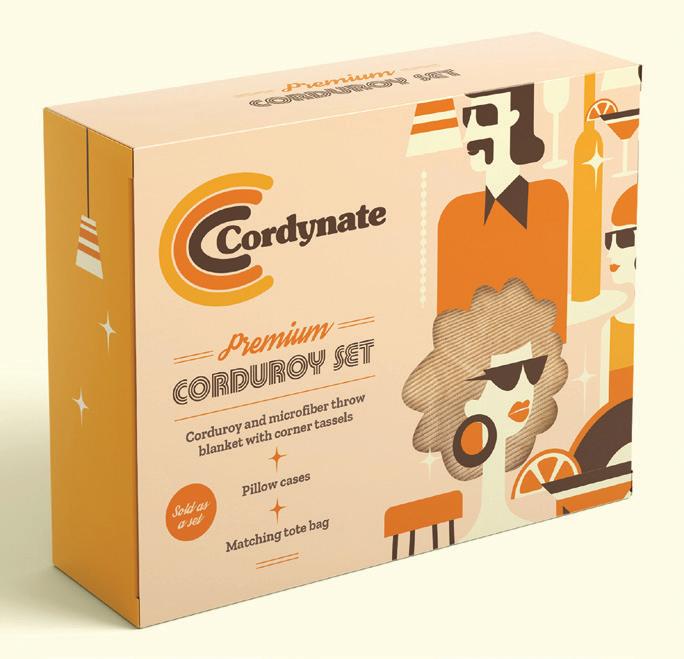
3. Highlight key elements of your products
Two main goals of any packaging design is to help a brand stand out and to effectively communicate what the product is. A popular way we’ll see this delivered in the year ahead is through illustrated
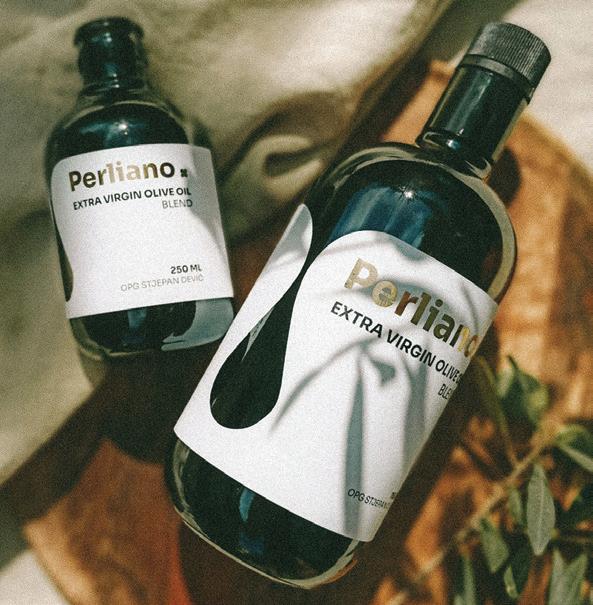
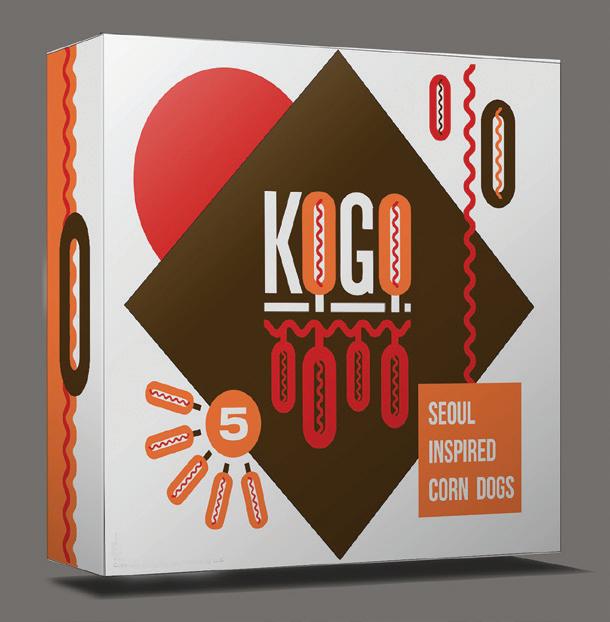

Not necessarily, and that’s what this trend is all about—featuring product elements in a looser, more abstract way that leaves the visual somewhat open to interpretation. Not only does this style give brands a little more freedom with their packaging, it’s visually intriguing, helping them stand out and heightening their customers’ curiosity.
4. Play with colors and textures
If adding illustrations or playing with patterns doesn’t make sense for your packaging, how about trying new colors or textures?
In 2023, ecstatic colors will be all the rage for packaging design, helping brands to grab the spotlight. Think splashes of bold, highly saturated colors that are overflowing with confidence. The beauty of this trend is these hues can be adapted in all sorts of variations, working particularly well for brands with black or white logo marks that leave room for ecstatic colors to be an enticing backdrop. Its versatility doesn’t always extend to more high-end brands, but if being loud and proud is what matters most, this approach is well worth exploring

ingredients in punchy palettes. This trend is just as it sounds—filled with playful illustrations of ingredients in bright, bold colors. It’s exciting and full of life, prioritizing playfulness over polish, while effectively conveying what your product is made up of with a transparency customers will appreciate. While elevating visuals of ingredients on packaging makes sense, doing so doesn’t have to be entirely literal for the design to create the same effect. This is evident in the latest trend toward showcasing product visuals with a more abstract, creative twist. Sure, your product may be lemonflavored but does that mean you need a lemon tree on your packaging?
For more refined or minimalist brands, never fear, leveraging textures is a packaging trend that enhances perceived value. This aesthetic employs techniques like foil printing, which uses reflective metals, and embossing or debossing, where the packaging is raised or recessed, to make a design feel instantly expensive. Not to mention, adding these tactile effects appeals to consumers’ sense of touch—perfect for tempting people to grab your product off shelves. As this style is a bit extra, it does work particularly well for upscale products, making it a great tactic for any brand launching an extravagant product line in the year ahead.
Ultimately whether creating new packaging or updating existing creative, what most consumers are looking for right now is to be greeted positively and authentically— whether you are appealing to new customers or longtime loyalists. As always, it’s important to stay aligned with your brand personality and values, but if you’re in a position to address these needs in any capacity, it will be well worth the investment. PW
45
Seventies’ vintage designed by Kamilla Oblakova on 99designs by Vista
Illustrated ingredients in punchy palettes designed by gianni88 on 99designs by Vista
Product visuals with a creative twist designed by Levro on 99designs by Vista
Tactile texture designed by Dalmartian on 99designs by Vista
Ecstatic colors designed by BenTo-. on 99designs by Vista
Caitlin Collins is head of brand marketing for 99designs, the global creative platform by Vista
PRECISION CHECKWEIGHING DUAL CAMERA INSPECTION
Companies
ProMach’s acquisition of Ferlo will increase its existing position in processing equipment, expanding its international presence in the retort segment.
Formost Fuji Corp. purchased a 65,000-sq-ft building in Everett, Wash. to expand its manufacturing and assembly floor as well as provide larger office space for the engineering, sales, service, accounting, and administration departments.
Serac opened a sales office in Pune, India.
Marchesini Group acquired Mantua-based Rejves Machinery
Highcon and Sealed Air (SEE) announced a strategic collaboration that includes SEE’s $8 million investment in Highcon’s convertible debt as well as the purchase of its first Highcon Beam 2C digital cutting and creasing system.

Spee-Dee Packaging Machinery expanded its Test Lab to 3,000 sq ft to meet growing demand for testing at its facility.
Bosch Rexroth opened a Factory Automation Customer Innovation Center that will allow customers to collaborate and develop prototypes and proof-of-concept automation solutions in partnership with Bosch Rexroth technology experts.
Amcor announced a deal with ExxonMobil to drive progress on advanced recycling of materials for food and healthcare markets.
Duravant LLC’s acquisition of Multiscan Technologies expands its sorting, grading, and inspection equipment offerings.
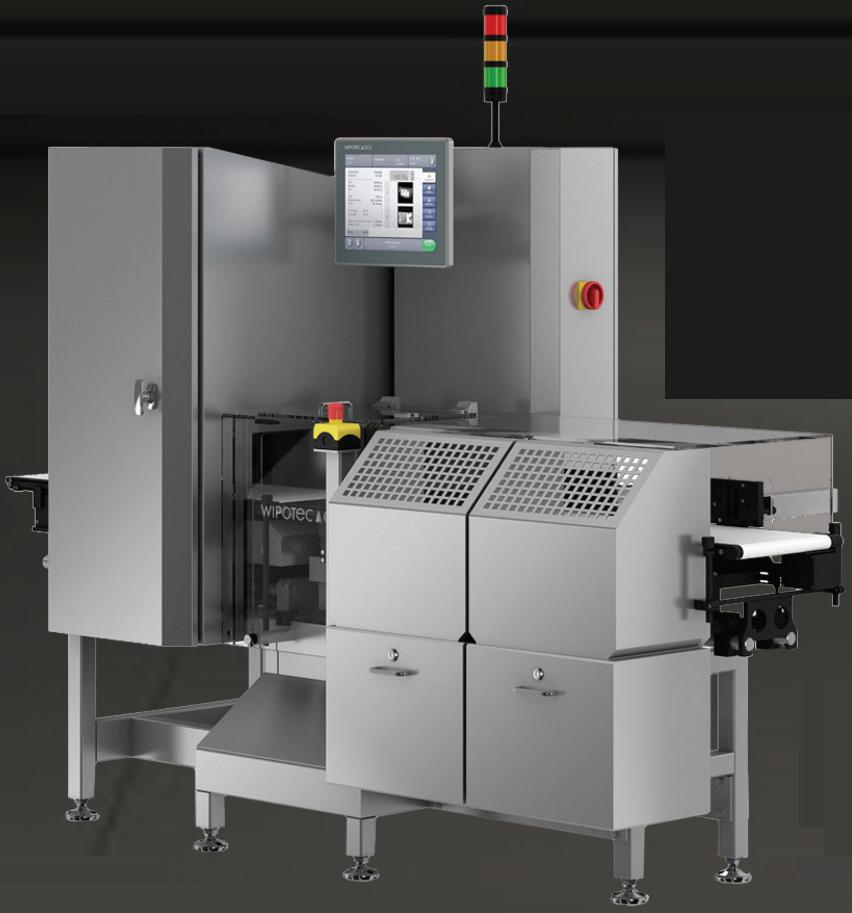
Barry-Wehmiller Design Group opened a Minneapolis office to expand its food industry presence. Shuttleworth completed a 57,000-plus-sq-ft expansion to its current manufacturing facility.
BW Packaging Systems rebranded as BW Packaging
FOX IV Technologies was appointed a North American distributor for Eclipse Label Finishing Systems
Matrix Packaging Machinery named MD Packaging as its exclusive distributor partner providing sales, parts, and service throughout Canada.
Evertis opened a plant in Monterrey, Mexico.
France was chosen as the European Pilot Market for Digimarc Recycle
People
Daymon Thompson was named director of product management for Beckhoff USA.
The Plastics Industry Association (PLASTICS) named Matthew Glaser senior director, Industry Engagement and Anthony DiGrado manager, Digital Affairs.
Daniela Israel was named vice president, Market Strategy for BW Integrated Systems.
JLS expanded its leadership team with the promotion of Craig Hafner to chief technology officer and Craig Wolfe to chief operating officer. Also, Carl Roeder was named Northwest U.S. regional sales manager.
Justin Neece was appointed vice president and general manager of Serpa.
Jon Doughty was appointed regional sales manager for Dorner.
Einar Einarsson was appointed president of Marlen International.
Schubert North America appointed Dominik Streicher chief operating officer for its Canadian entity, Schubert Packaging Automation, Inc.
46 PW FEB2023
> Highly Precise Product Transport > Verifying Cover Films > Checking of Barcodes & Sell by date > Vision Inspection from Above & Below www.Wipotec.com/us INDUSTRY WATCH
Multipack Handle Applicator
PakTech’s CCA MicroPak is capable of applying multipack can handles at speeds to 60 cans/min and is able to accommodate both 12- and 16-oz standard can sizes, making it suitable for emerging brands as well as microbreweries and mobile canning operations.

PakTech pwgo.to/7883
Multiple Pouch Pack
Arranti’s CubiPak features 6 pouches that can be easily separated by a quick-tear perforation and can function as a separate stand-up item.

Arranti pwgo.to/7884
AI Protein Sorting Solution
JLS’ hygienic Talon primary loading system features Smart Vision Works’ SiftAI, a learning algorithm that correctly identifies required cuts of protein for packaging, solving sorting problems caused by production variation.

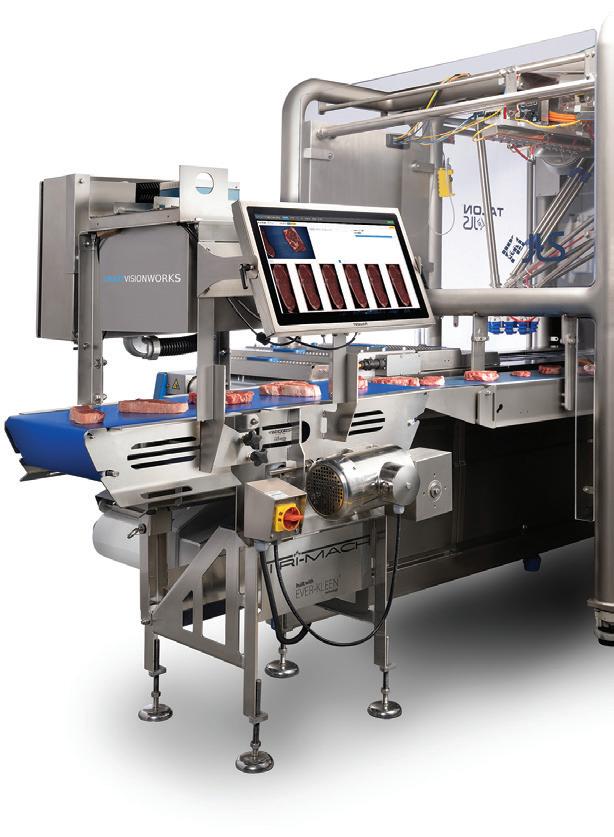
JLS Automation pwgo.to/7882
Small-Character CIJ Printing System
Squid Ink introduces the JetStream® PX CIJ continuous inkjet printing system designed to print small characters on a variety of substrates using hard-pigmented inks to code on dark-colored surfaces.
Squid Ink pwgo.to/7880
Connect with Suppliers Fast
PMMI
of packaging machinery, materials, and service solutions. With a powerful search engine and the ability to filter solutions by machine feature and package type, ProSource brings vetted suppliers to you. Visit www.prosource.org today.

47 AD INDEX BellatRx Inc. www.bellatRX.com 11 BELL-MARK www.bell-mark.com 10 Frain Industries www.fraingroup.com 13 Heat and Control, Inc. www.heatandcontrol.com 21 High Tek USA, Inc. www.hightekusa.com 15 ID Technology www.idtechnology.com 5 Intralox www.intralox.com 01 Klöckner Pentaplast, PHD www.kpfilms.com IFC Label-Aire, Inc. www.label-aire.com 6 Mamata Enterprises, Inc. www.mamata.com 9 Messe Dusseldorf North America www.interpack.com 25 Modular Conveyor Express www.modularconveyor.com 14 Nercon Conveyor Systems www.nerconconveyors.com 7 Novanta www.celeramotion.com 19 OPTIMA Machinery Corporation www.optima-packaging.com 17 Paxiom Group www.paxiom.com IBC PMMI, The Association for Packaging and Processing Technologies www.pmmi.org 27, 35 ProFood World www.profoodworld.com 37, 41 Specialty Equipment www.specialtyequipment.com 12 Triangle Package Machinery Company www.trianglepackage.com 3 Uline www.uline.com 24 Unified Flex Packaging Technologies www.unifiedflex.com 23 VDG www.vandergraaf.com OBC WestRock www.westrock.com/aps 0FC WIPOTEC www.wipotec.com 46 Connect with a Leaders in Packaging supplier and support packaging education! www.packworld.com/leaders ADVERTISER WEBSITE PAGE Search Packworld.com for additional information on any of the advertisers listed or visit their website directly TECHNOLOGY Visit the link below each item for more info.
ProSource is a free online directory
categories of validated suppliers
with 900
By Ben Miyares, Packaging Sherpa
Packaging’s Most Versatile, Sustainable Option
What would packaging look like if virgin plastics were made illegal?
That’s ultimately what plastic packaging’s harshest critics are pushing for. Single-use plastic packaging may be the current focus of their environmental animus, but nothing short of total eradication of polymers is their ultimate goal.
Eliminating just four popular packaging polymers—polyethylene, polyethylene terephthalate, polypropylene, and polystyrene— wouldn’t just wipe out all or most of the bottles on our grocery and drug store shelves, it would cause supply chain choke-ups and severely restrict the material choices from which we could build functional packaging structures.
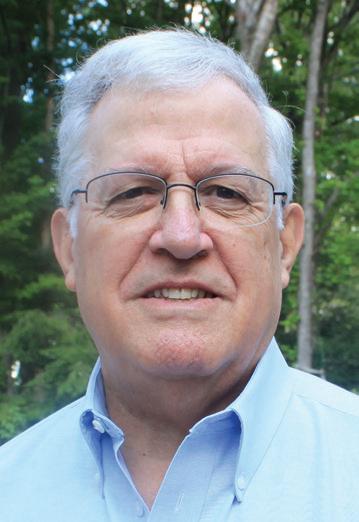
Polymers’ relatively low-cost and high-performance profiles have made them practically indispensable and economically irreplaceable in packaging.
Tracking the 2018-2021 plasticsreducing actions of ten large consumer goods manufacturers (Nestlé, Procter & Gamble, PepsiCo, AB InterBev, Unilever, JBS, Tyson Foods, The Coca-Cola Co., Mars Incorporated, and L’Oréal), the Ellen MacArthur Foundation reported that the companies found switching from single-use packaging to reusables was the least effective way to reduce plastic packaging during the study period. Of the companies reporting moves away from single-use plastics, Coke had the greatest reduction in single-use plastics, 2.7%. The biggest drop in virgin plastic resin use among the 10 companies was achieved by Mars (pwgo.to/7902). Nestlé famously switched its Smarties candies from plastics to paper at the outset of 2021 as “one of our key sustainable packaging initiatives in the confectionery category.” Regional Australian trials of recyclable paper wraps (more on page 14) are the latest for Nestlé’s KitKat candy bars. The company says it’s leaving no rock unturned in its quest to reduce plastic usage by a third by 2025. Nestlé says it’s using less of it, using recycled forms of it, and in this case, seeking alternatives to it.
Three European environmental groups, not content with mere anti-plastics rhetoric, are suing Danone under a French “Duty of Vigilance” law that requires large companies to address the environmental impact of their operations and allows them to be sued if they fail to do so (pwgo.to/7903).
“Danone is trudging ahead without a serious plan to deal with plastics, despite clear concern from climate and health experts and consumers, and a legal obligation to face up to the issue,” says a
spokeswoman for one of the three groups suing Danone. Danone strongly refutes the accusation, saying it is taking action to “reduce the use of plastic, develop reuse, reinforce collection and recycling channels, and develop alternative materials.”
In the UK, Mani-Life, a specialty peanut butter brand, has moved its six-variety line from conventional PET jars into new “bespokedesigned, fully recyclable and reusable 275-g (10-oz) glass jars…made from 60% recycled glass. We have designed these jars for the ultimate peanut butter experience,” enthuses Mani-Life founder Stu McDonald. “They are short and wide which means stirring is genuinely a pleasure and spooning every last morsel out of it is utter bliss.” Metal lug closures complete the new package.
In an aggressively anti-plastics sustainability marketing play, SUPA Innovations Ltd, a British firm, is introducing “eco-mate” brand liquid laundry products and SUPA, 100% plasticand metal-free paper bottles in which the liquids are packed. SUPA stands for Single Use Plastic Alternative. The paper used in the bottle’s construction is “sustainably sourced from the pulp waste” created during sugar cane production. “This means our bottle is not only free-from plastic, but also that it is made from a by-product that would otherwise have to be thrown away. Re-using a natural pulp in this way means that no trees have been cut down in the production of our eco-mate bottles and we’re helping to reduce waste too.” The SUPA bottle has a plant-based coating that prevents the liquid from coming into contact with it. The bottle’s paper fibers are embedded with a seaweed extract that lends water resistance for a specific period of time but still allows for recycling.
Plastic packaging’s would-be annihilators will not succeed. But their antagonistic anti-plastic ardor could measurably “deplastify” the packaging mix. They have succeeded in demonizing plastic packaging among (some) consumers and provoked a number of companies to rejigger their packaging material mixes in the name of sustainability.
Economics and sustainability will see paper increasing its share of the packaging market over plastics because paper is the most versatile of the alternatives.
Over the course of their packaging lives, all material weights are reduced to their lowest functional points. But, in the process of losing weight, they also lose strength and only paper can be economically molded, folded, and rolled into any conceivable solid-, liquid, or gas-holding format and still retain its position as the premier naturederived packaging material. PW
48 PW FEB2023
THE INSIDER
Ben Miyares, Packaging Sherpa, is a packaging market and technology analyst and is president of The Packaging Management Institute, Inc. He can be reached at bmiyares@packmgmt.org.
Plastic packaging’s would-be annihilators will not succeed. But their antagonistic anti-plastic ardor could measurably “deplastify” the packaging mix.














































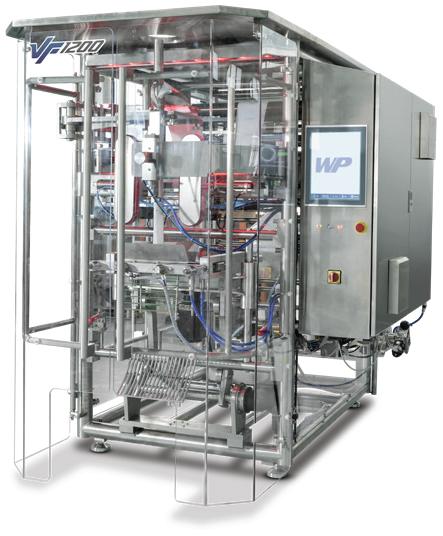
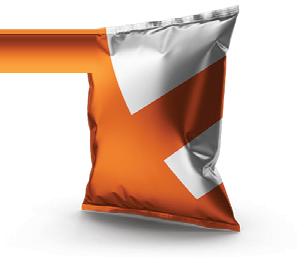







We Automate VF 1200 Continuous Motion Bagger Up to 180 / minute Compact pick & place cell Accurate to 0.01g WeightCheQ 0-250 High Precision Check Weigher PKR Delta Robot Case & Tray Packer BI 600 + BU 600 Bag Inserter & Bag Uncuffer System g 1.833.4PAXIOM PaxiomGroup PaxiomXperience Learn more at paxiom.com Pre-roll Weighing Filling BaggingWrappingCappingSealingLabelingCartoningFormingPackingPalletizing LAS VEGAS • MILWAUK EE • MIAMI • TORONTO • MONTREAL • SCHIO, ITALY
No Maintenance Conveyor Belt Drive VDG Drum Motors
The SSV Series Drum Motor is the most hygienic and efficient conveyor drive for sanitary belt conveyor applications. It has the belt profile machined directly onto the drum and drives modular conveyor belts without using sprockets, reducing time and water used for washdown.
ELIMINATE Drive Sprockets


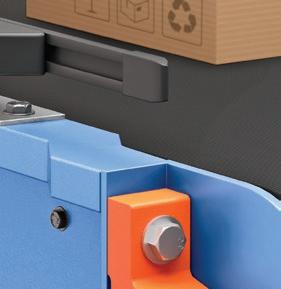
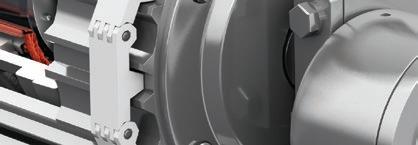

ELIMINATE Product Build-Up


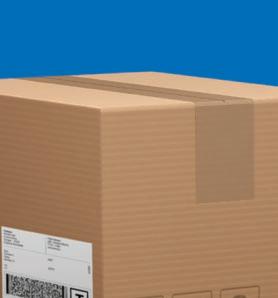
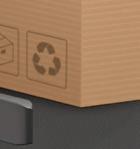

ELIMINATE Bacterial Harborage
Learn more: vandergraaf.com/pw (888) 326-1476
Engineered for reliability and longevity, VDG Drum Motors are designed for 80,000 hours of continuous operation before maintenance, reducing operational and maintenance costs and increasing throughput.


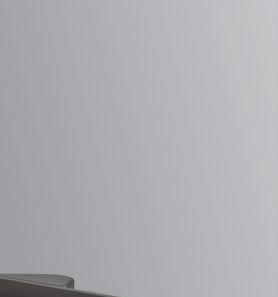


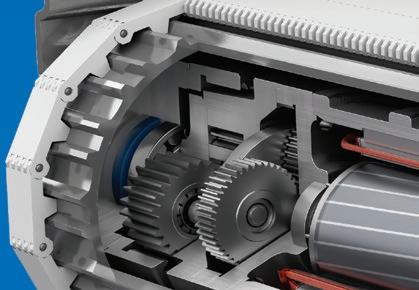


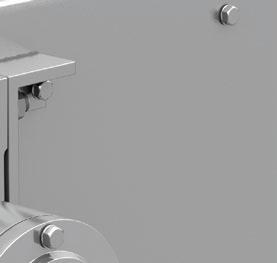


To suit various belt conveyor applications, a variety of diameter sizes, belt speeds, horsepower, face widths, and industry specific options are available.
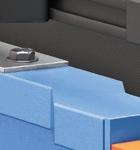

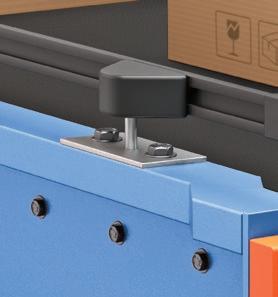

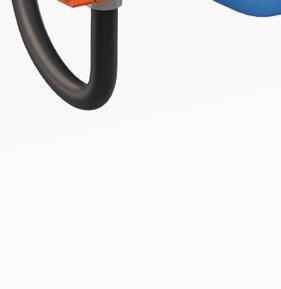
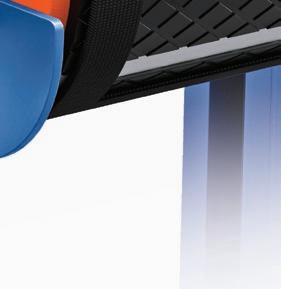

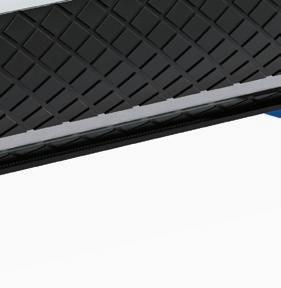







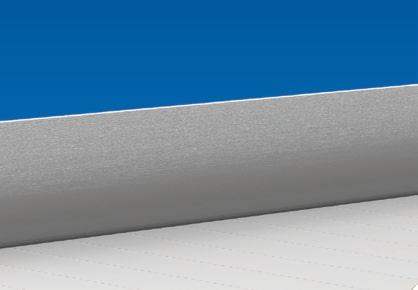





IronGrip™ Lagging








IMPROVE



INCREASE EXTEND
Belt Tracking




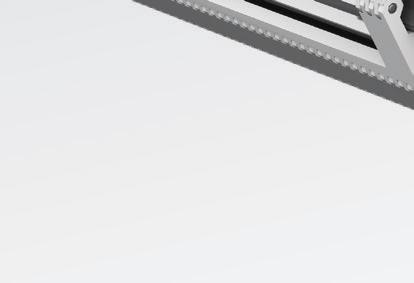
Belt Traction by 40%
Lifespan of the Conveyor Belt
 Vist Us at Booth S1275
Vist Us at Booth S1275















































































































































































































































 By Sterling Anthony, CPP, Contributing Editor
By Sterling Anthony, CPP, Contributing Editor










































































 Produced by Awards to be presented at
Produced by Awards to be presented at













































































































































 Vist Us at Booth S1275
Vist Us at Booth S1275